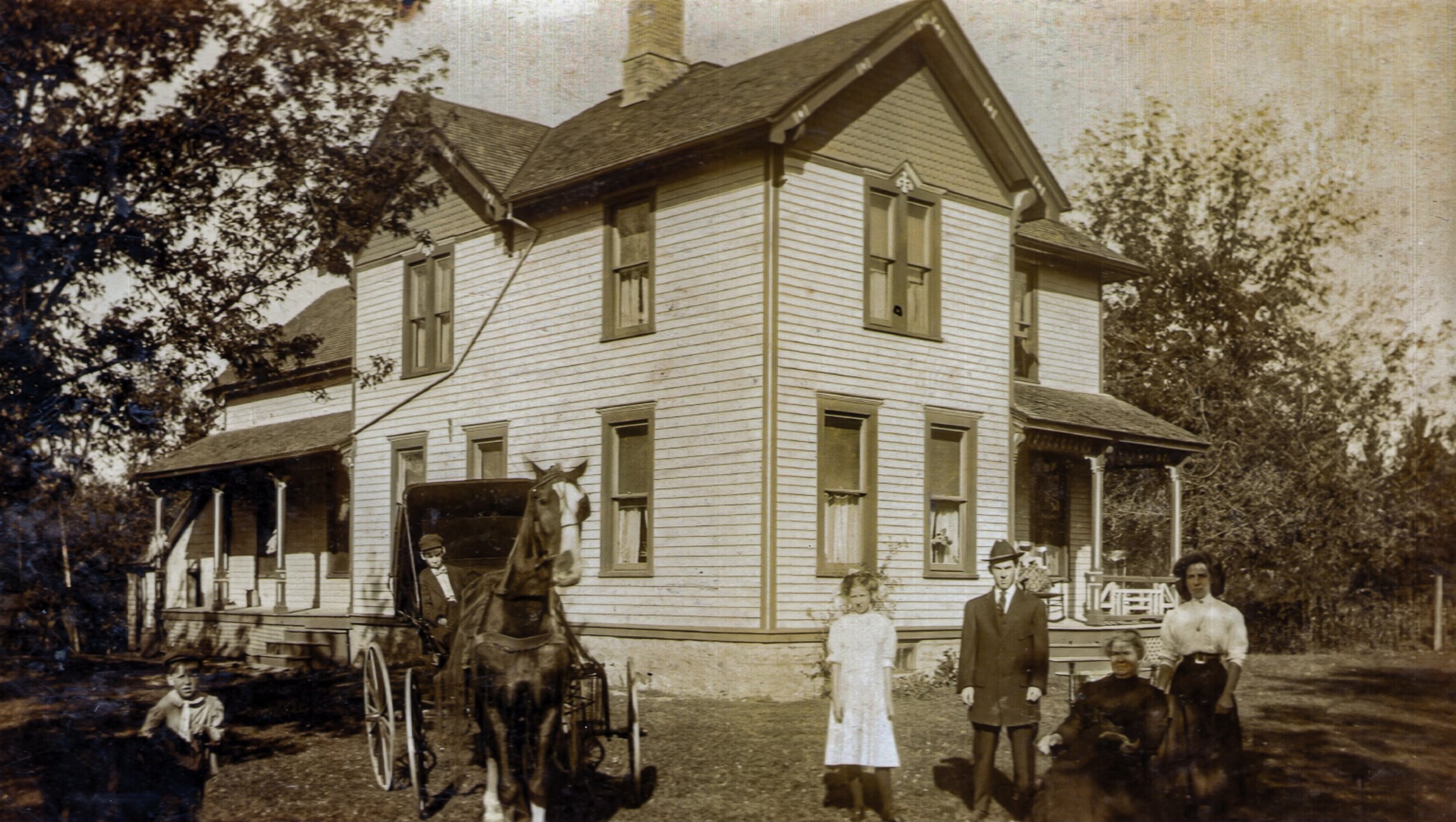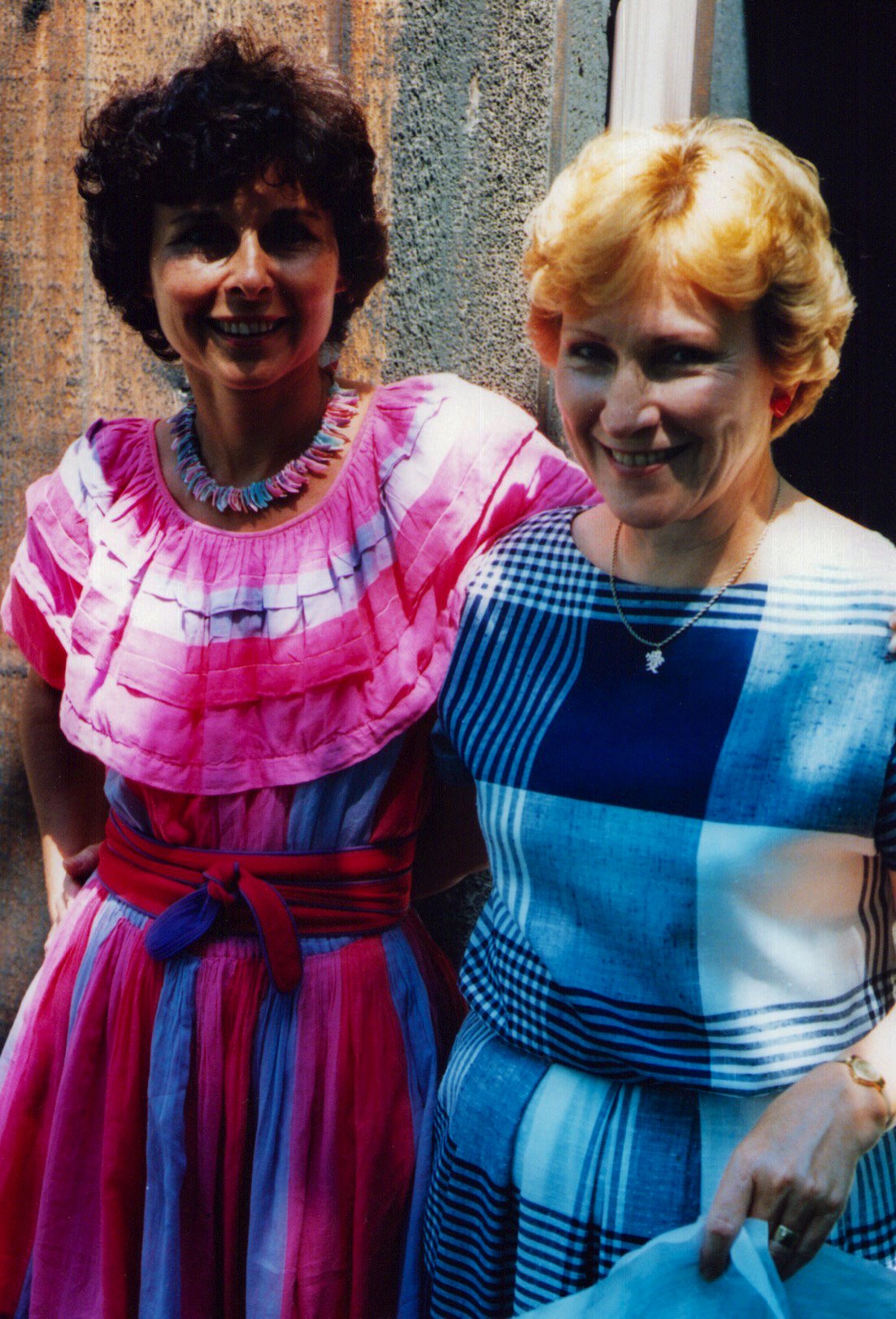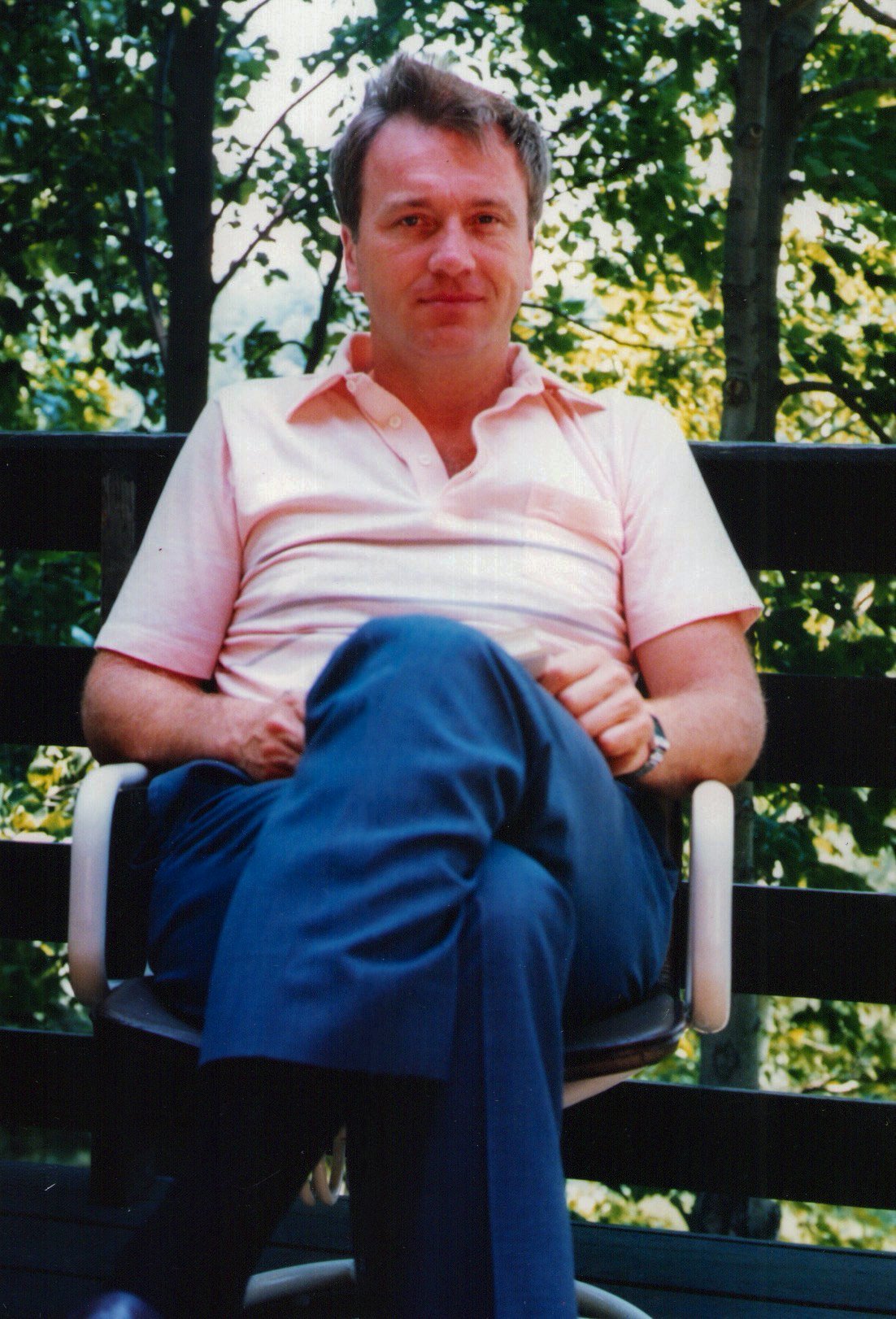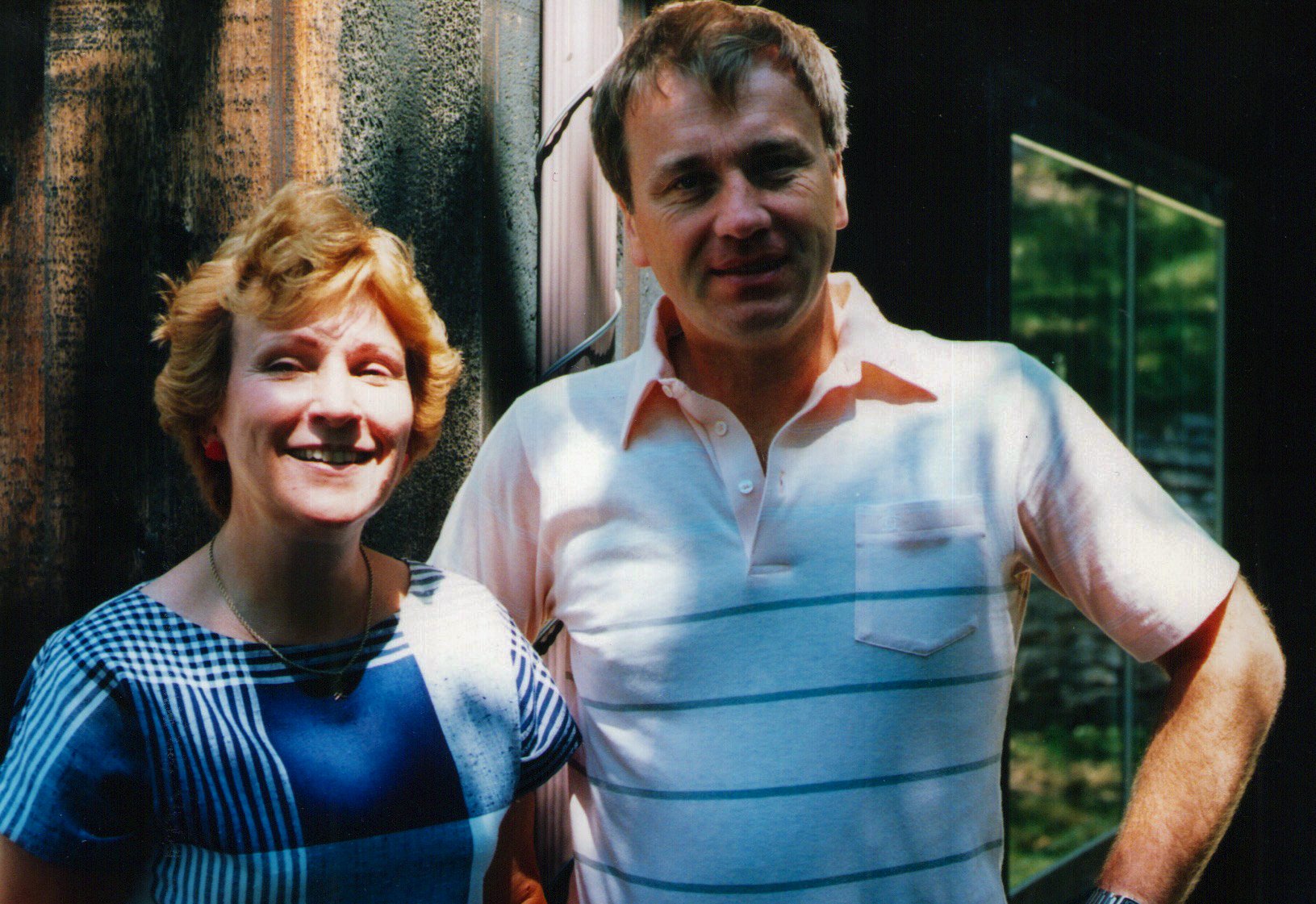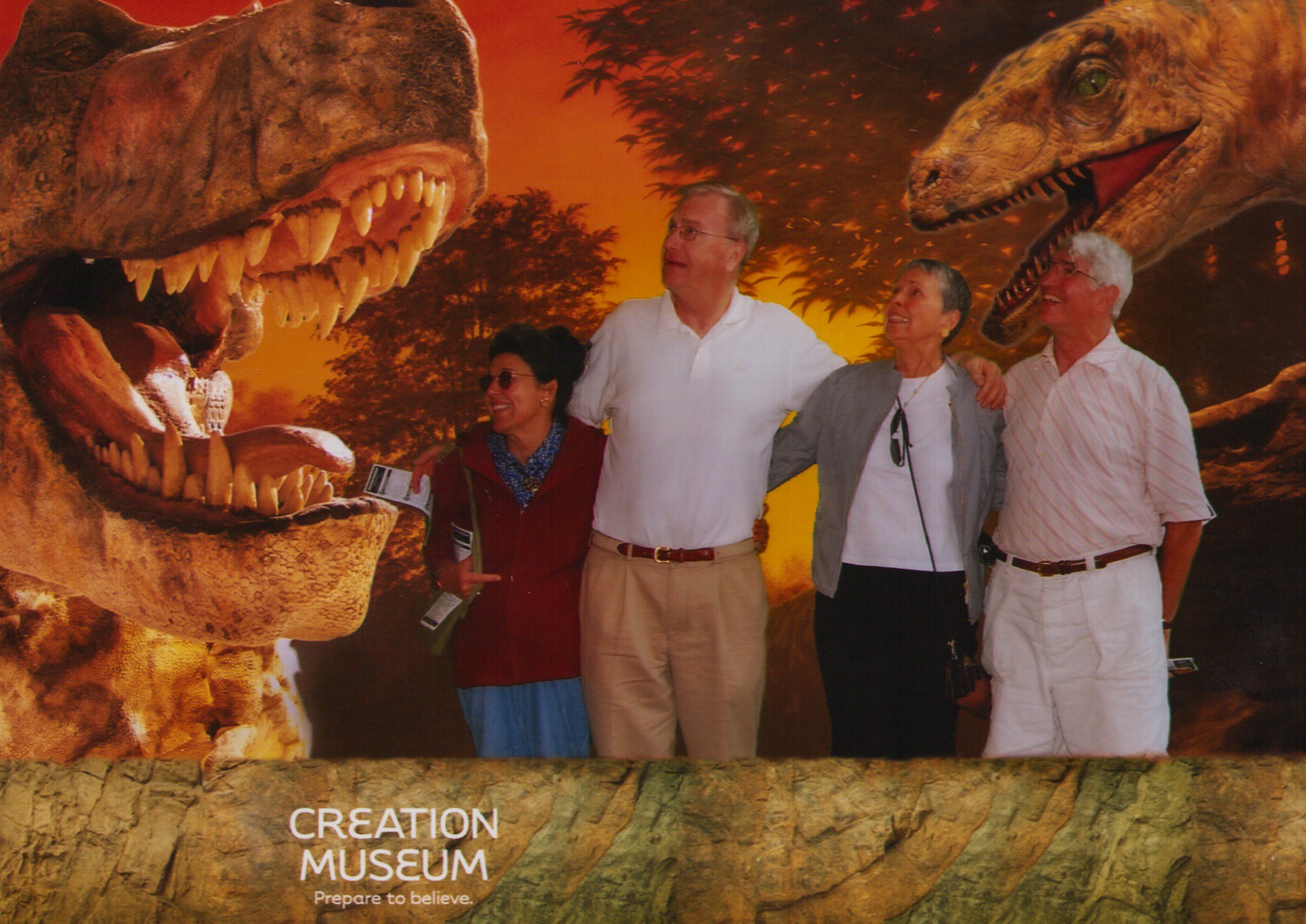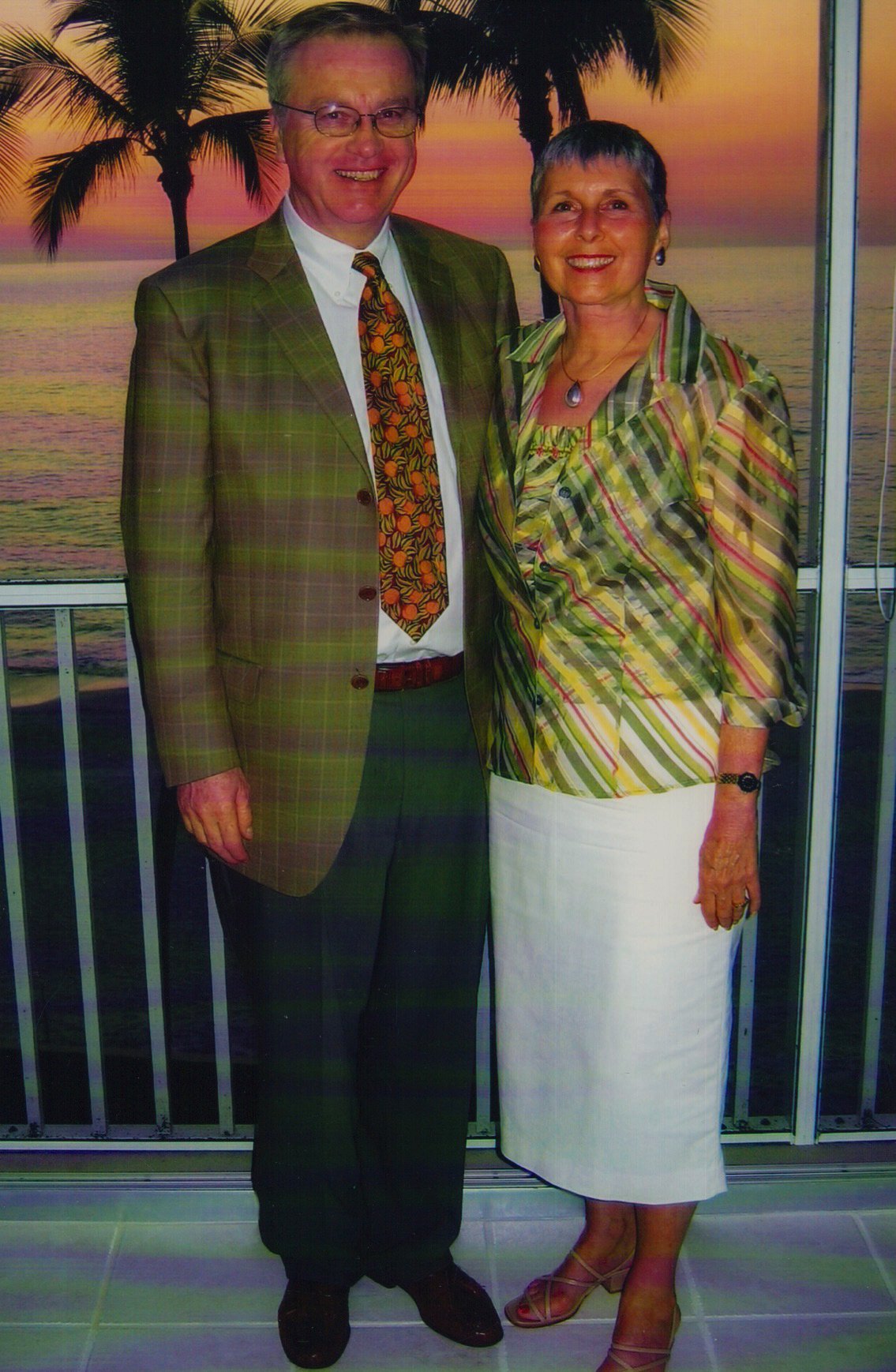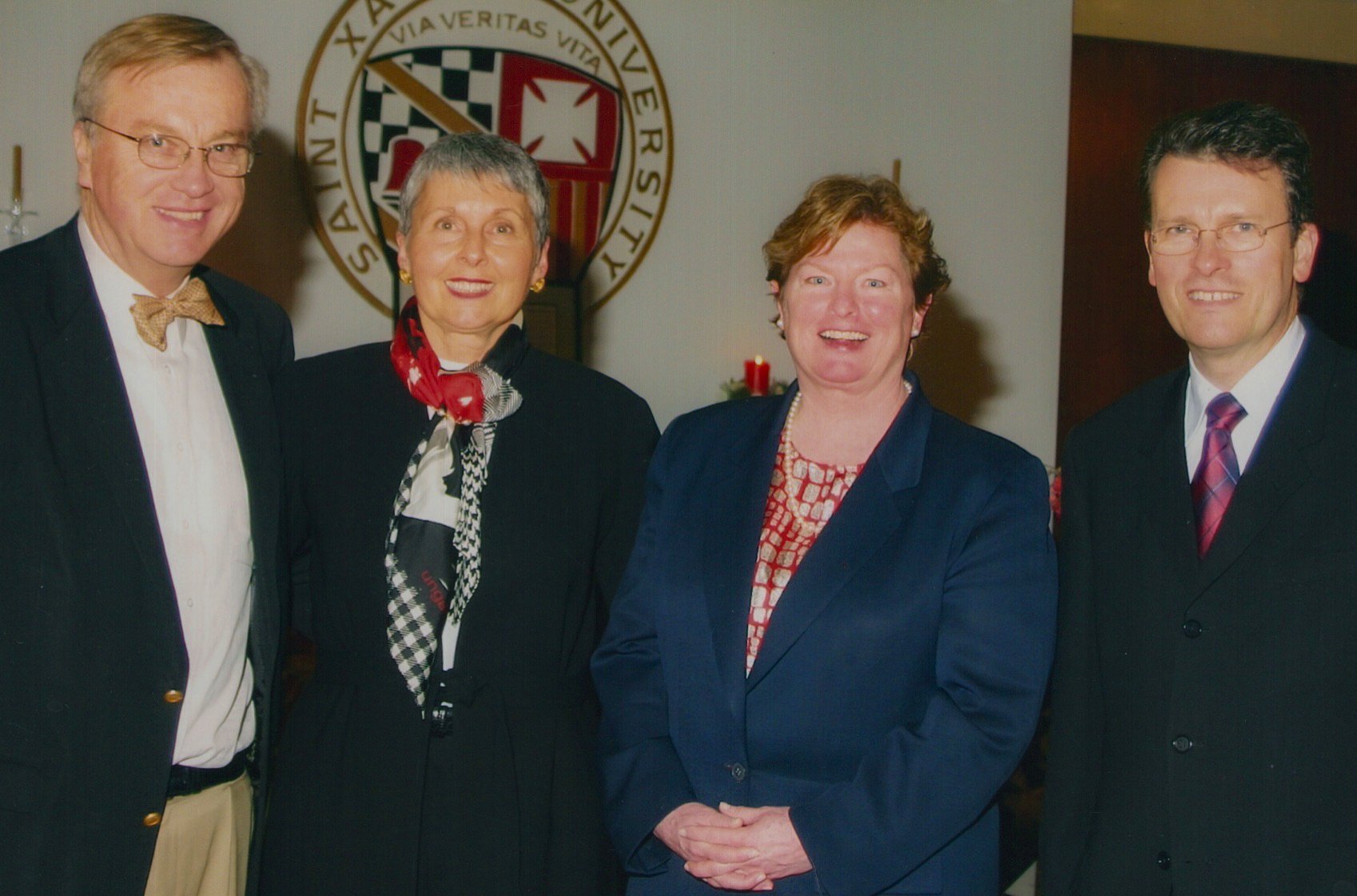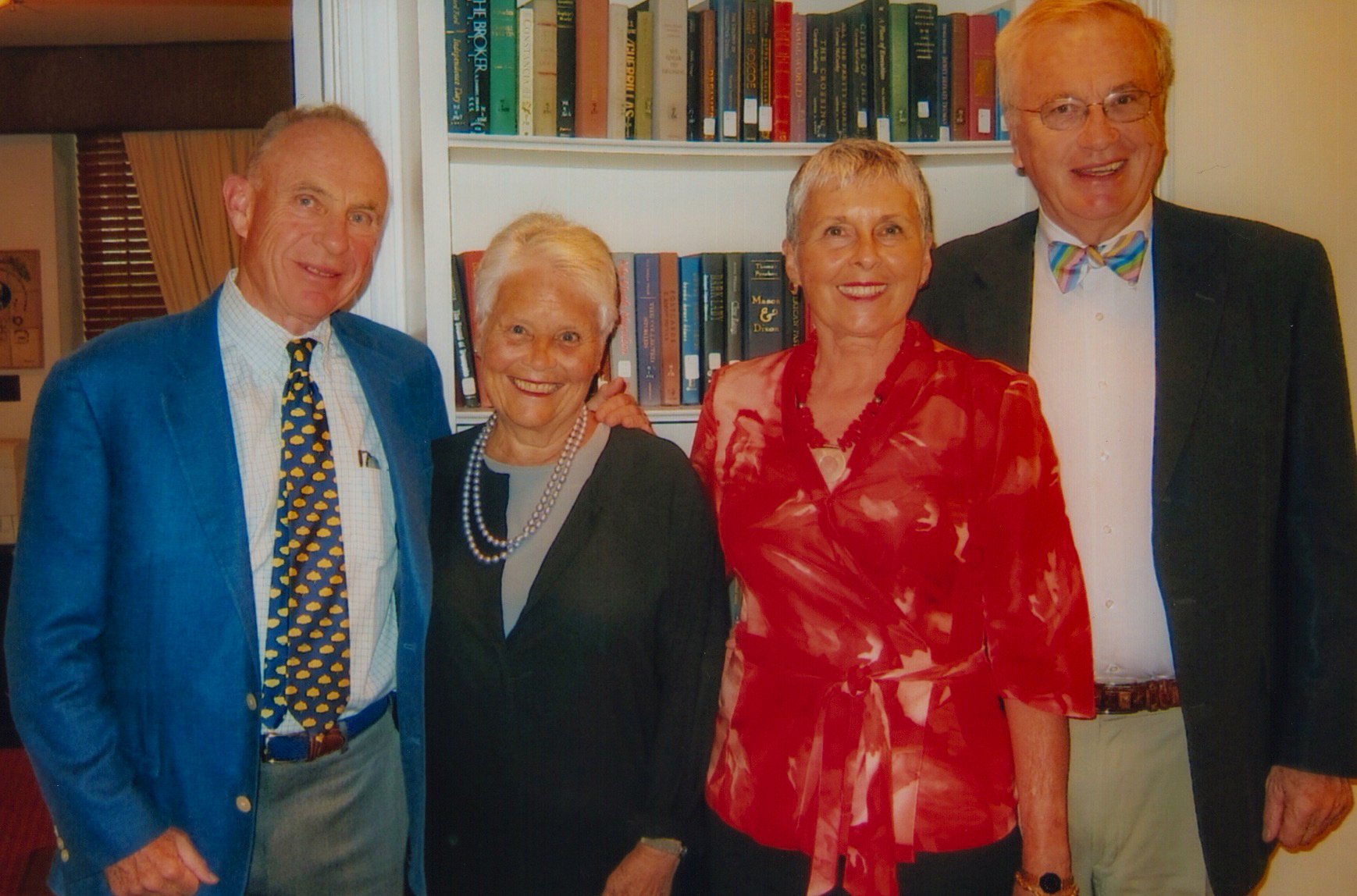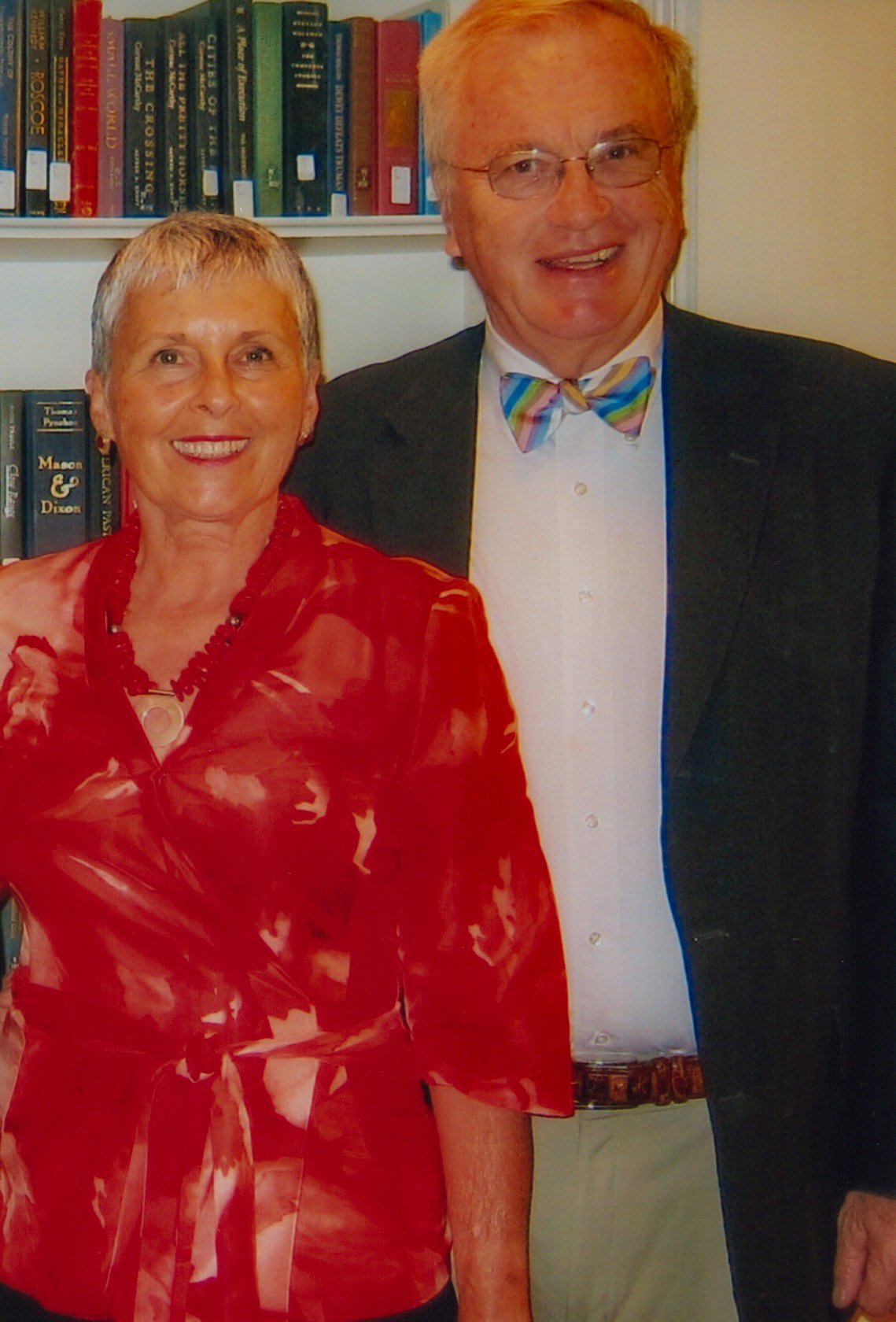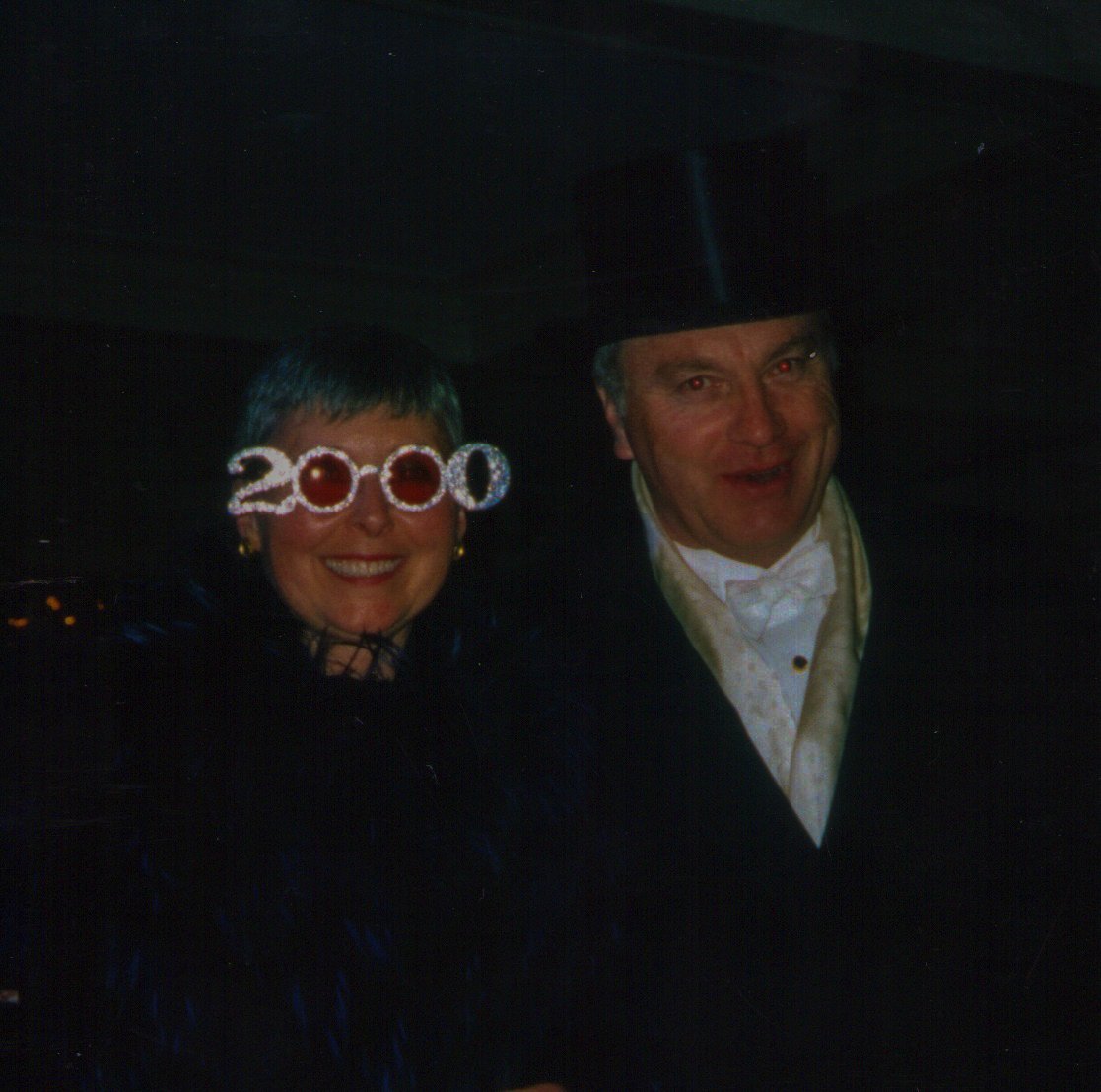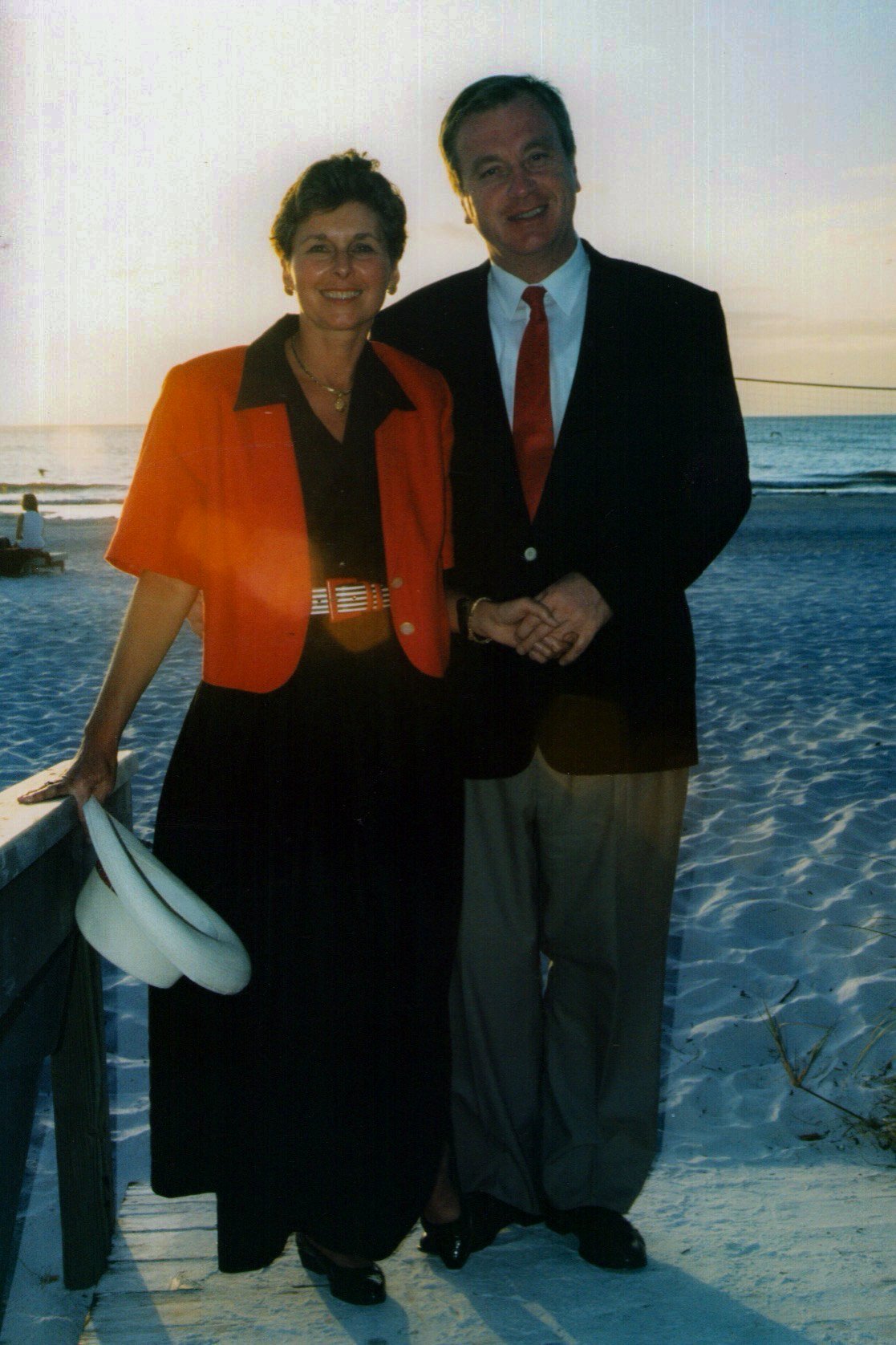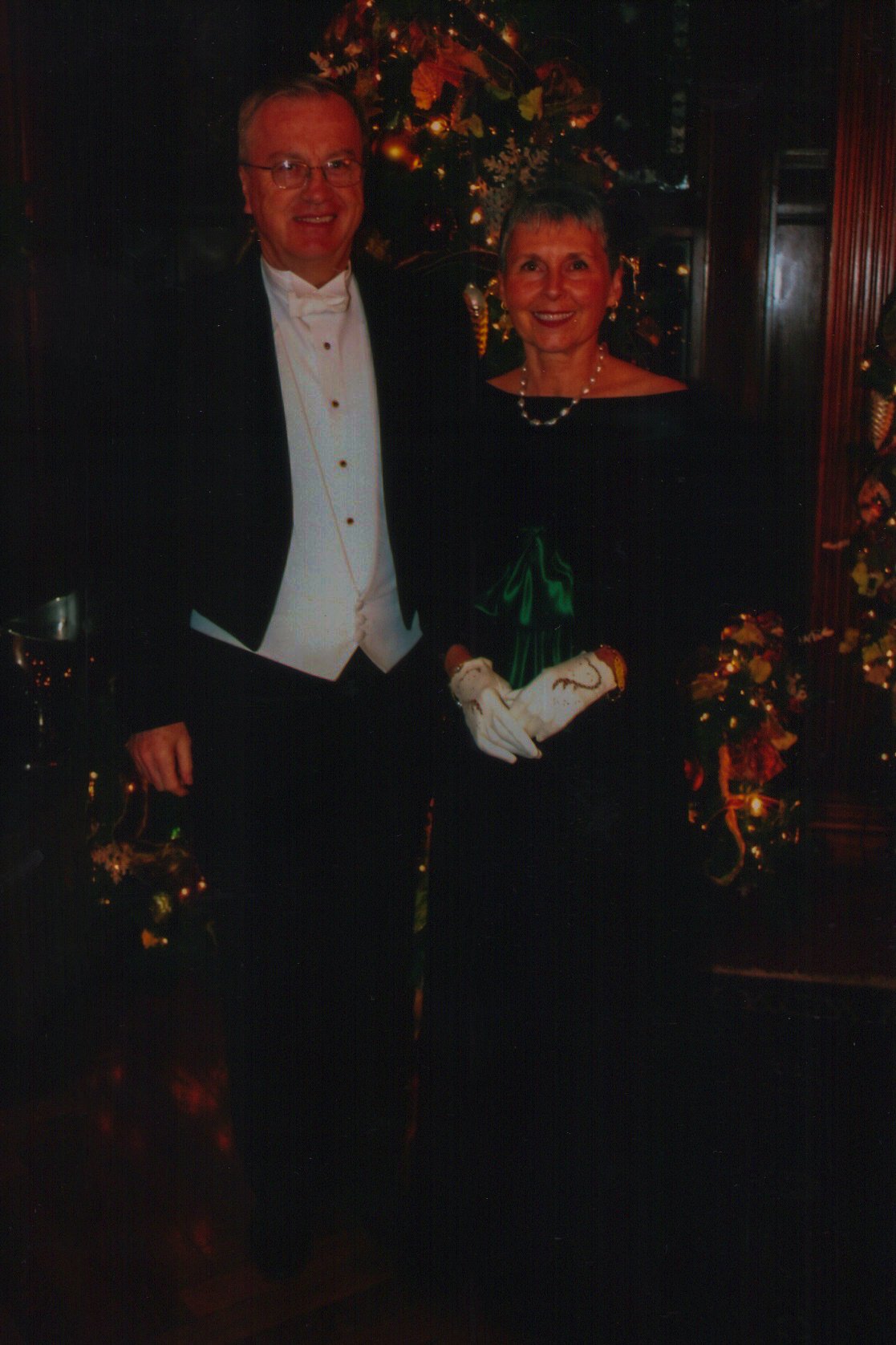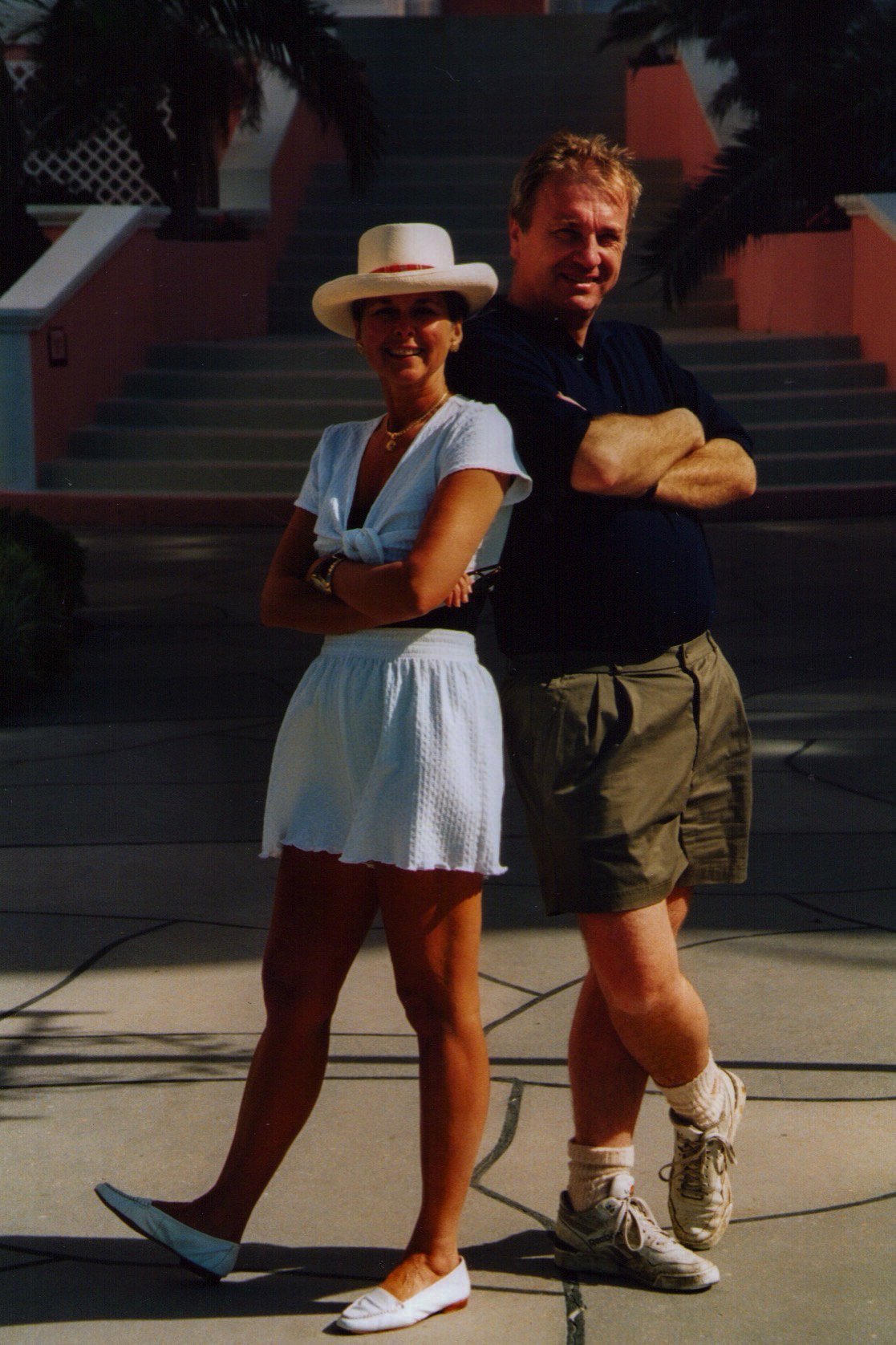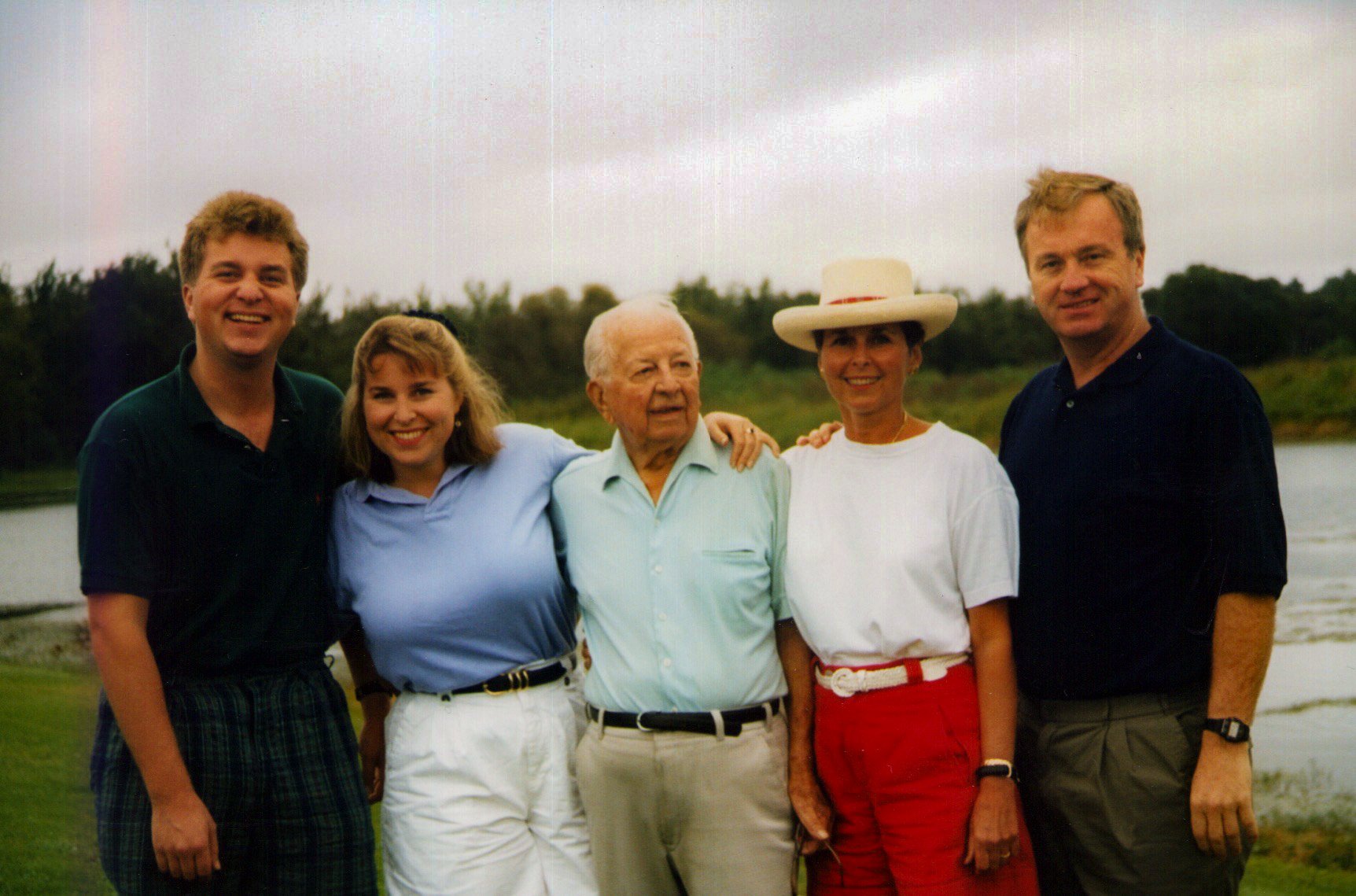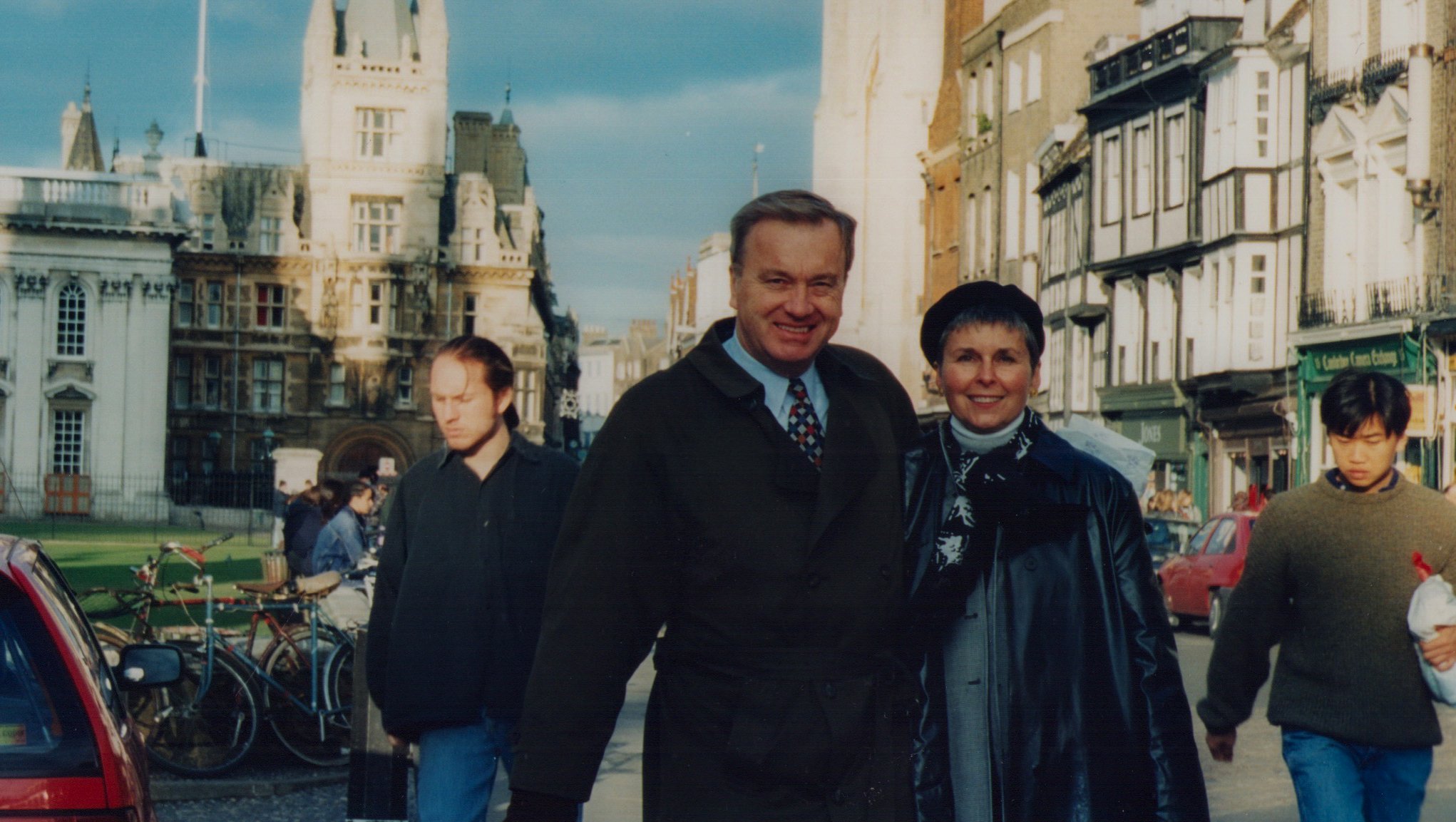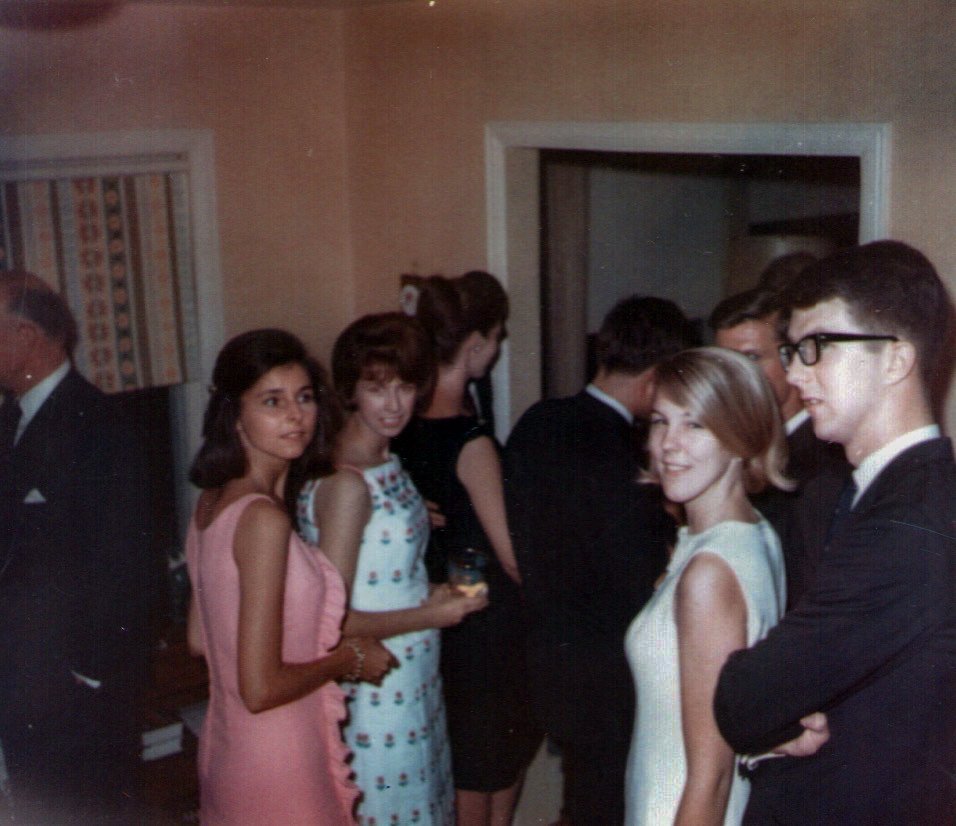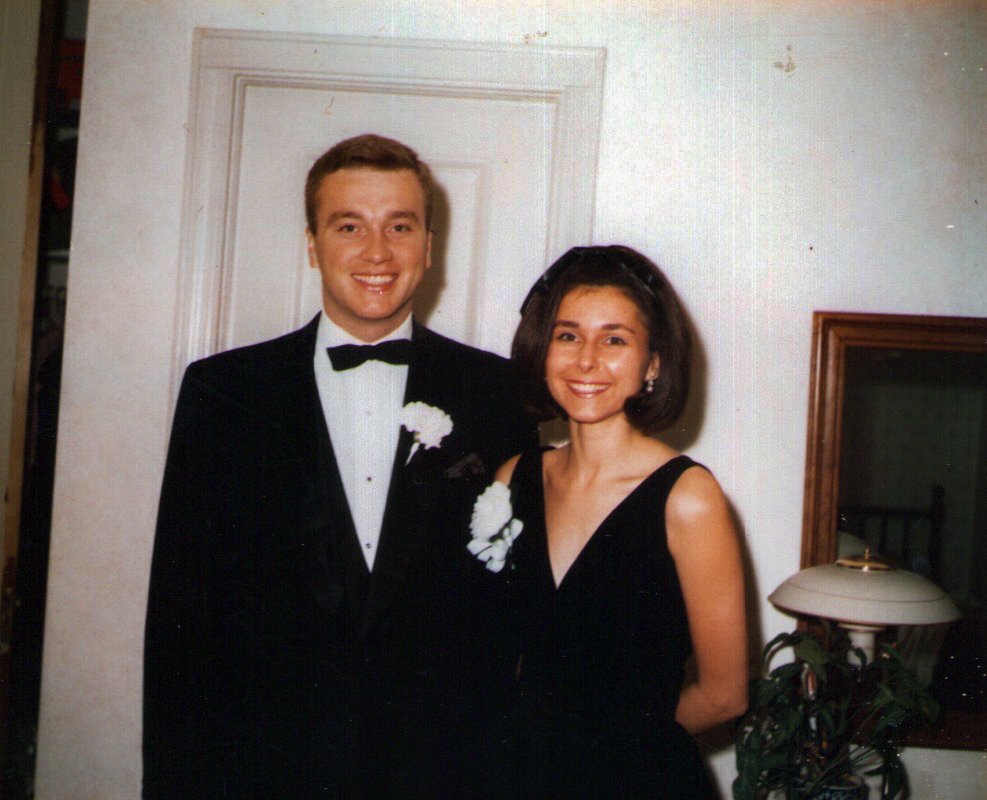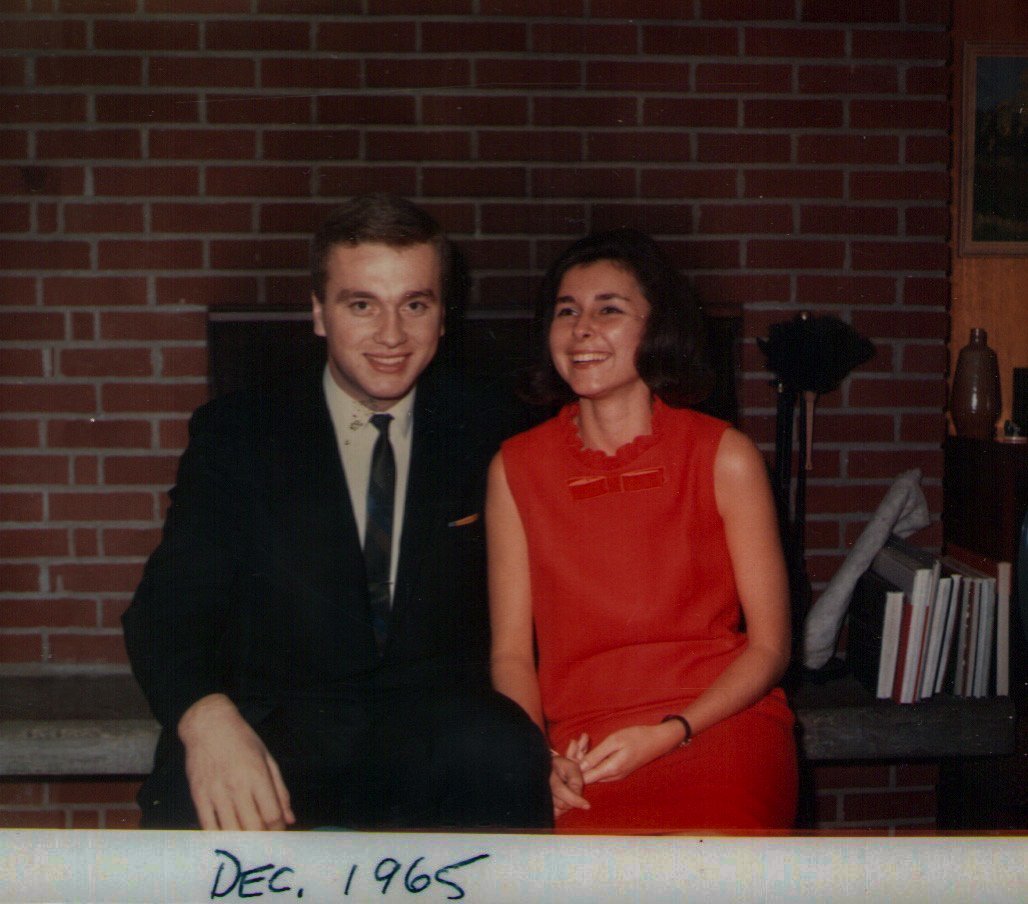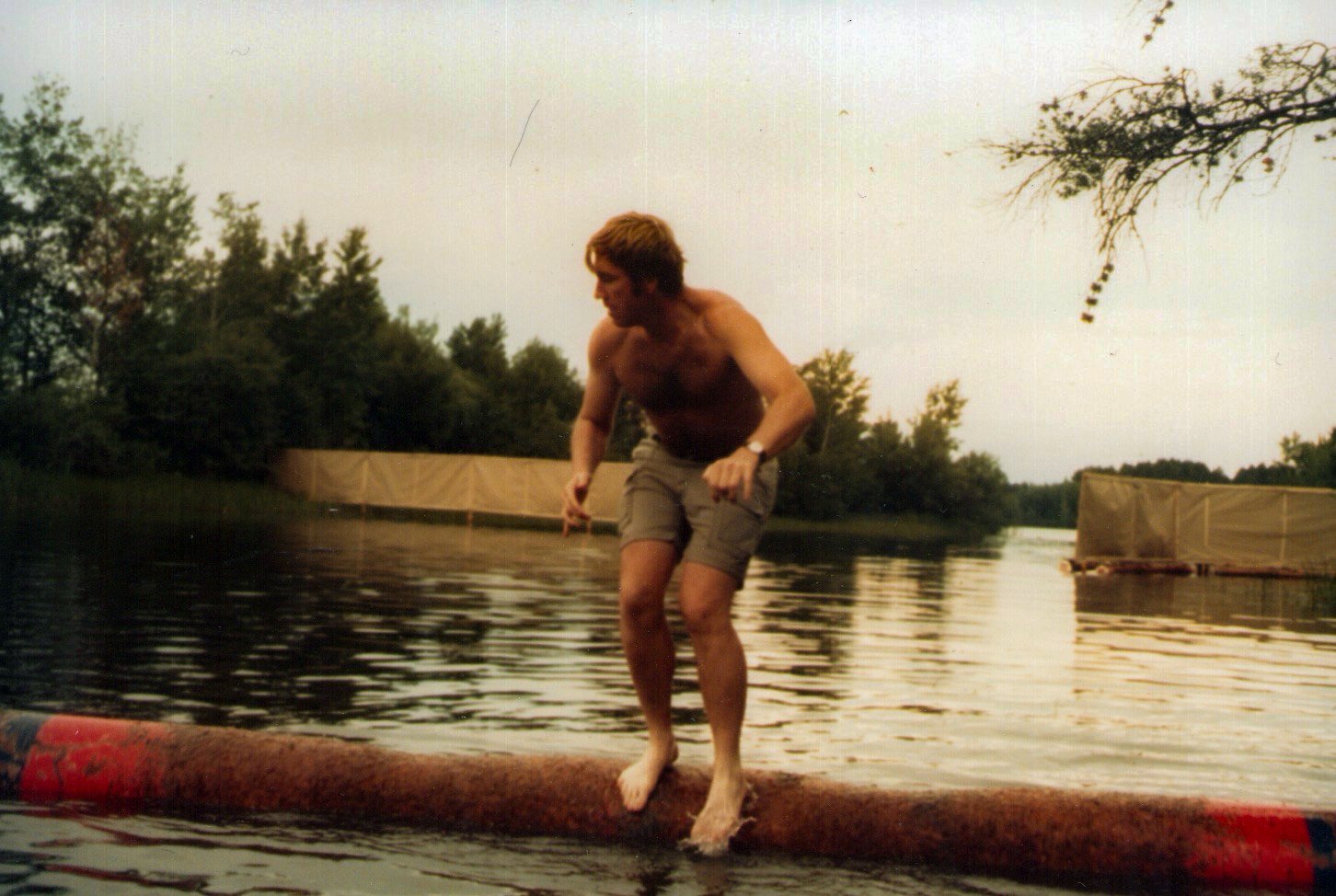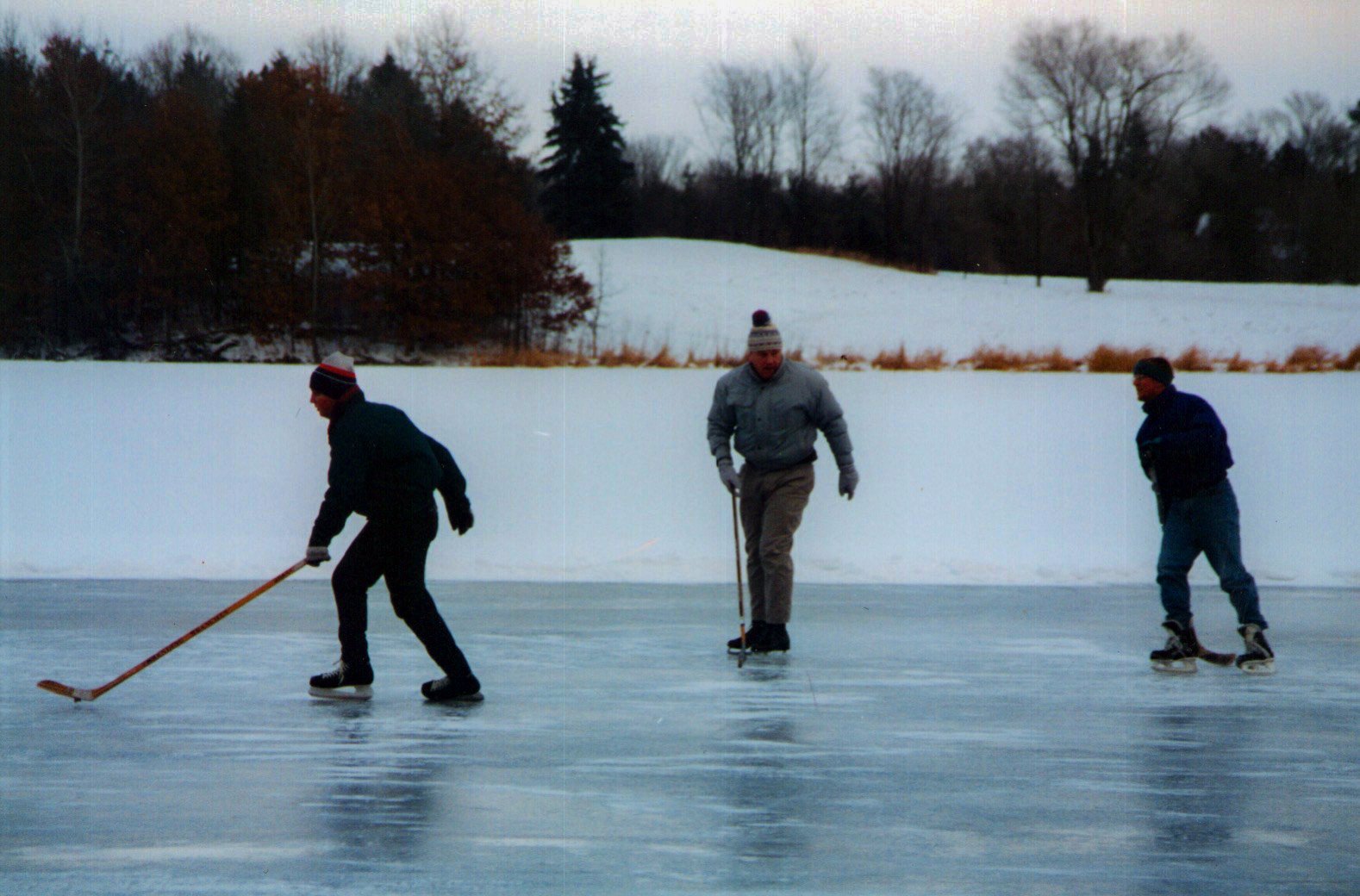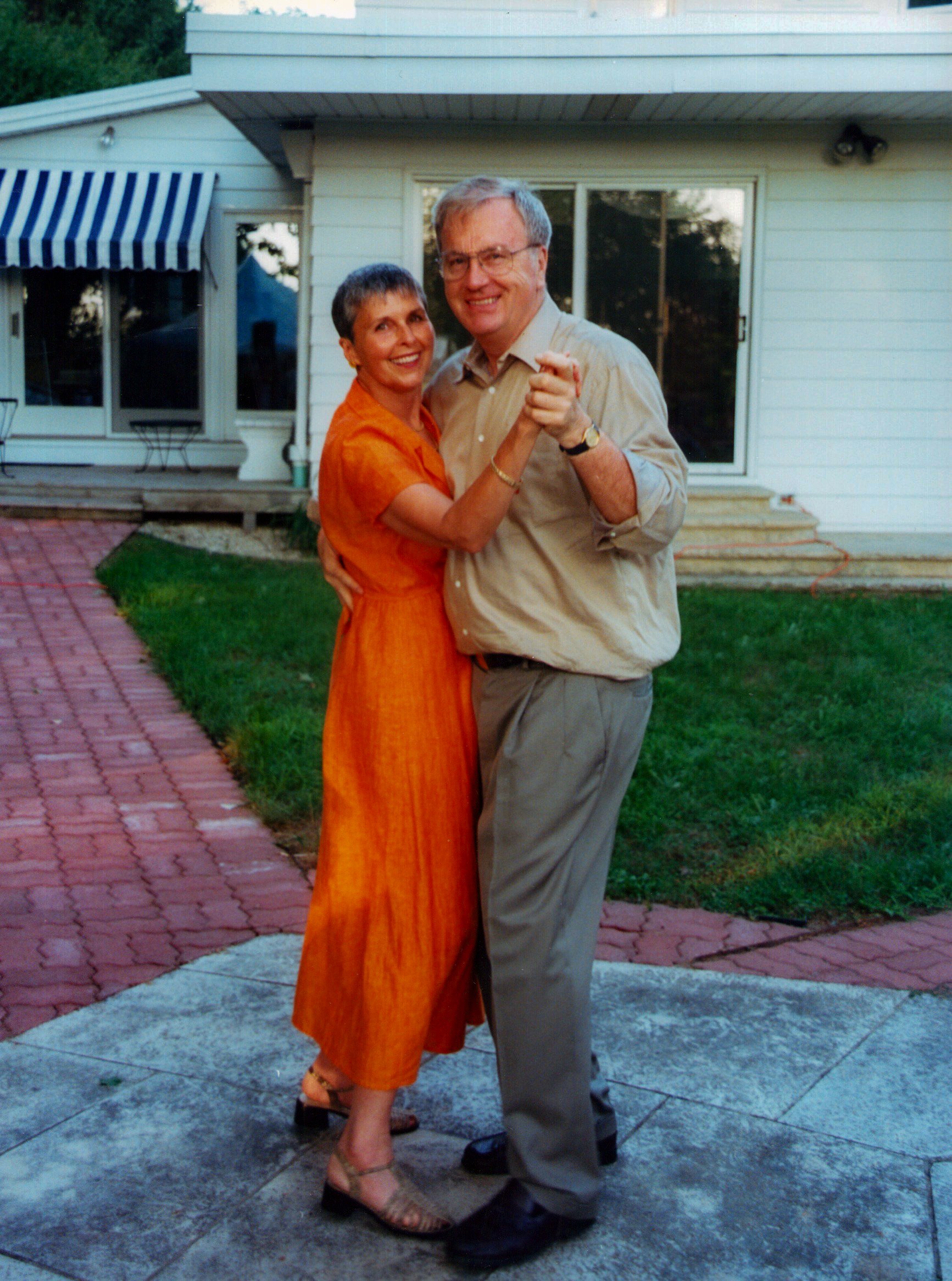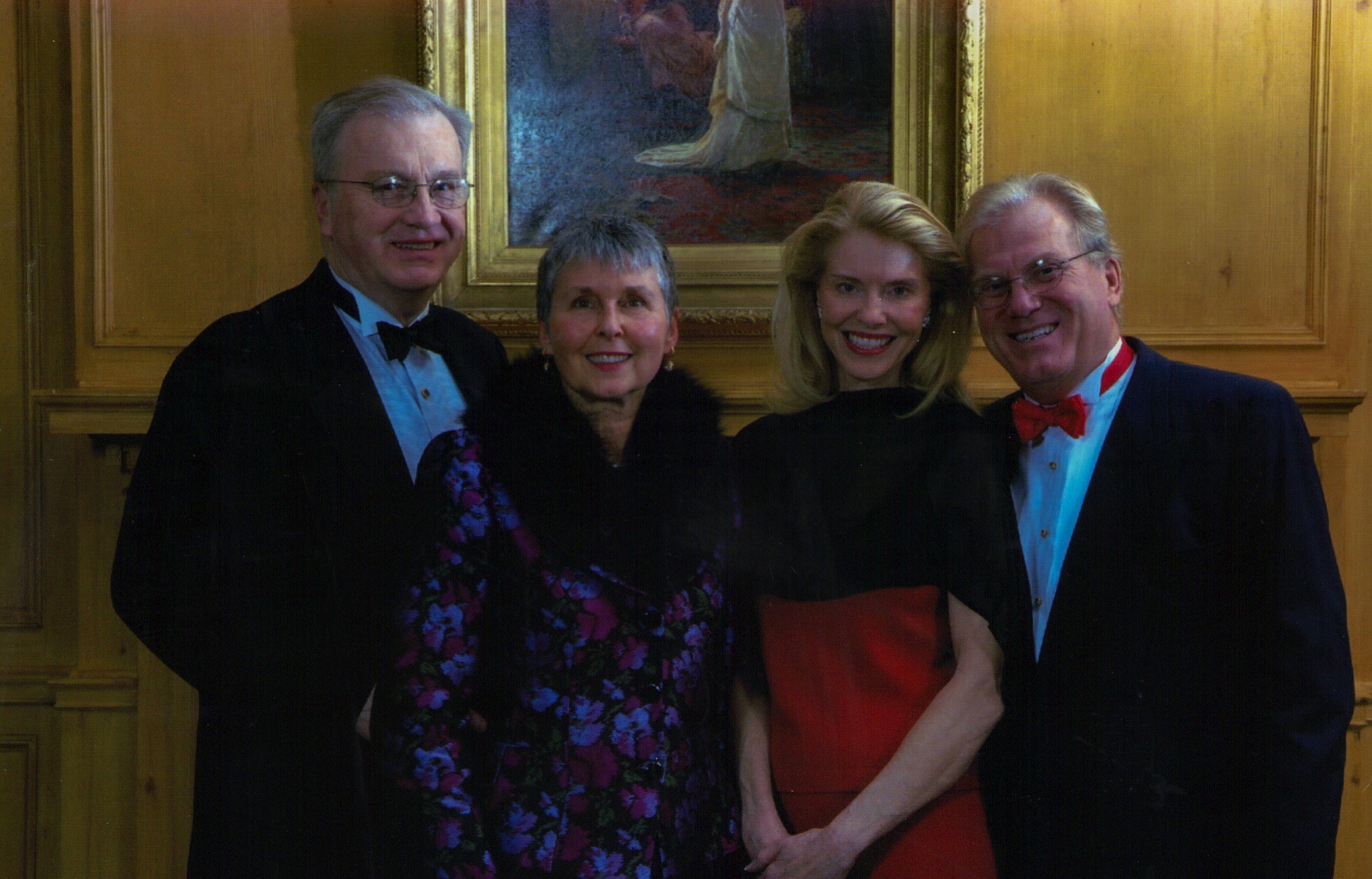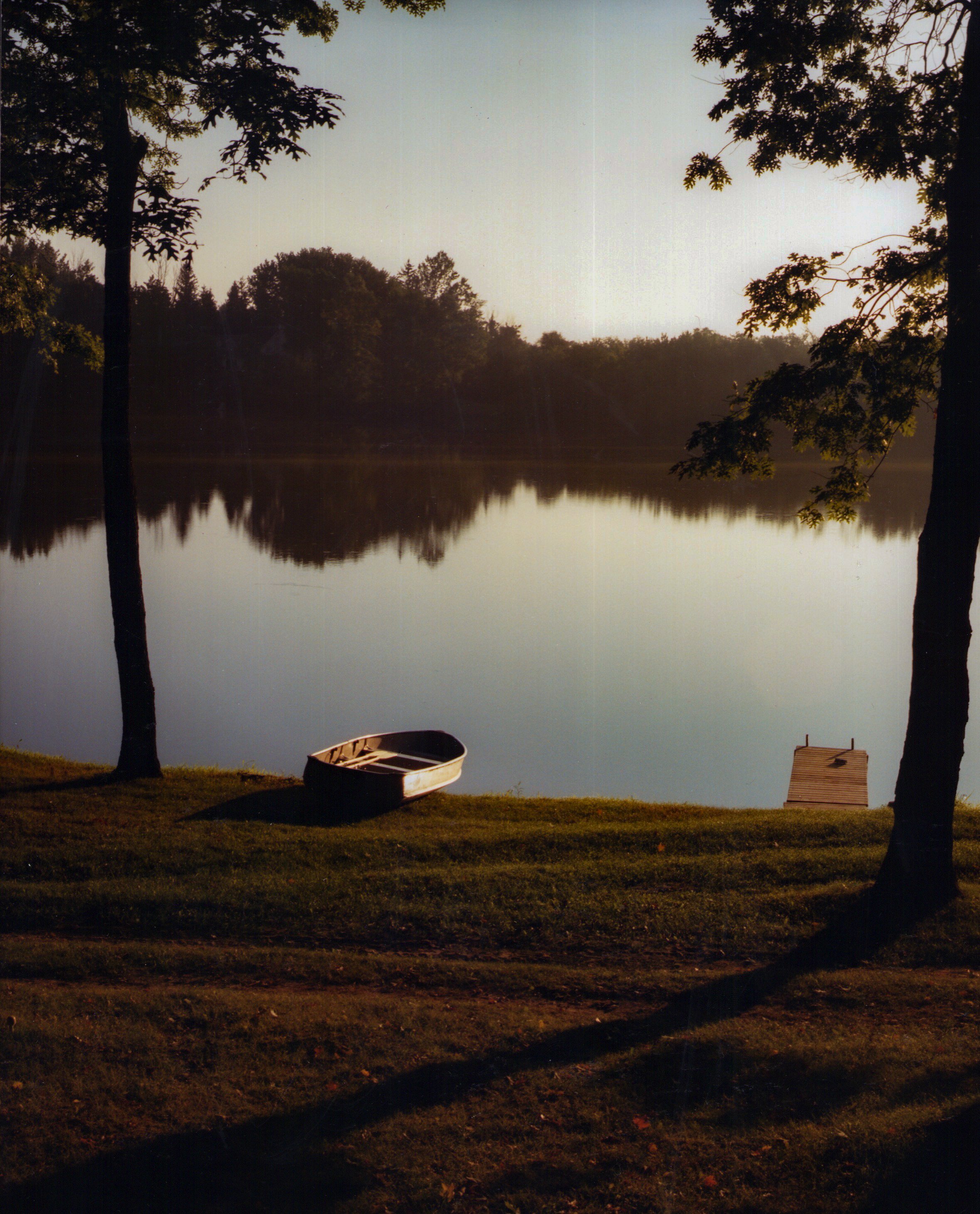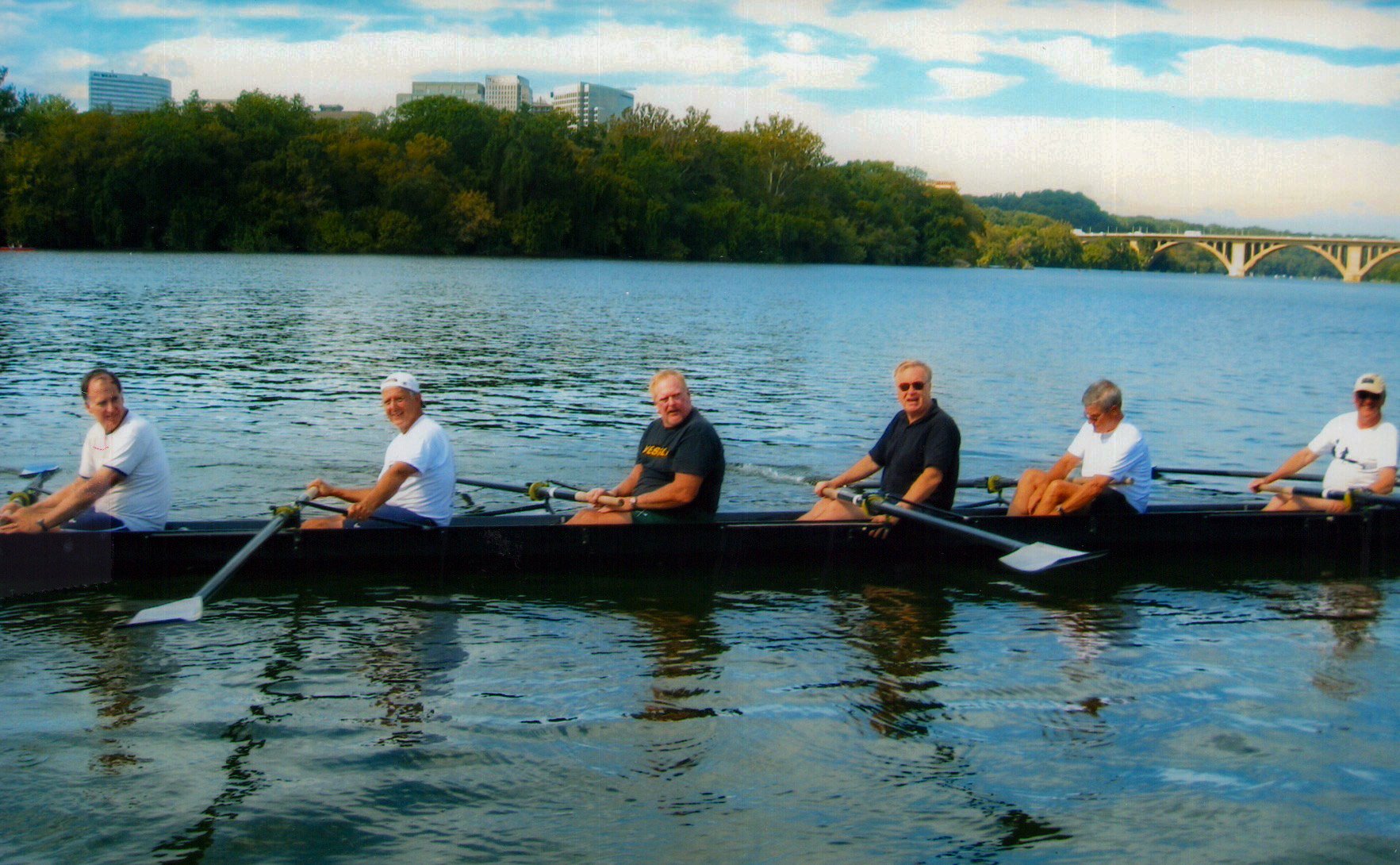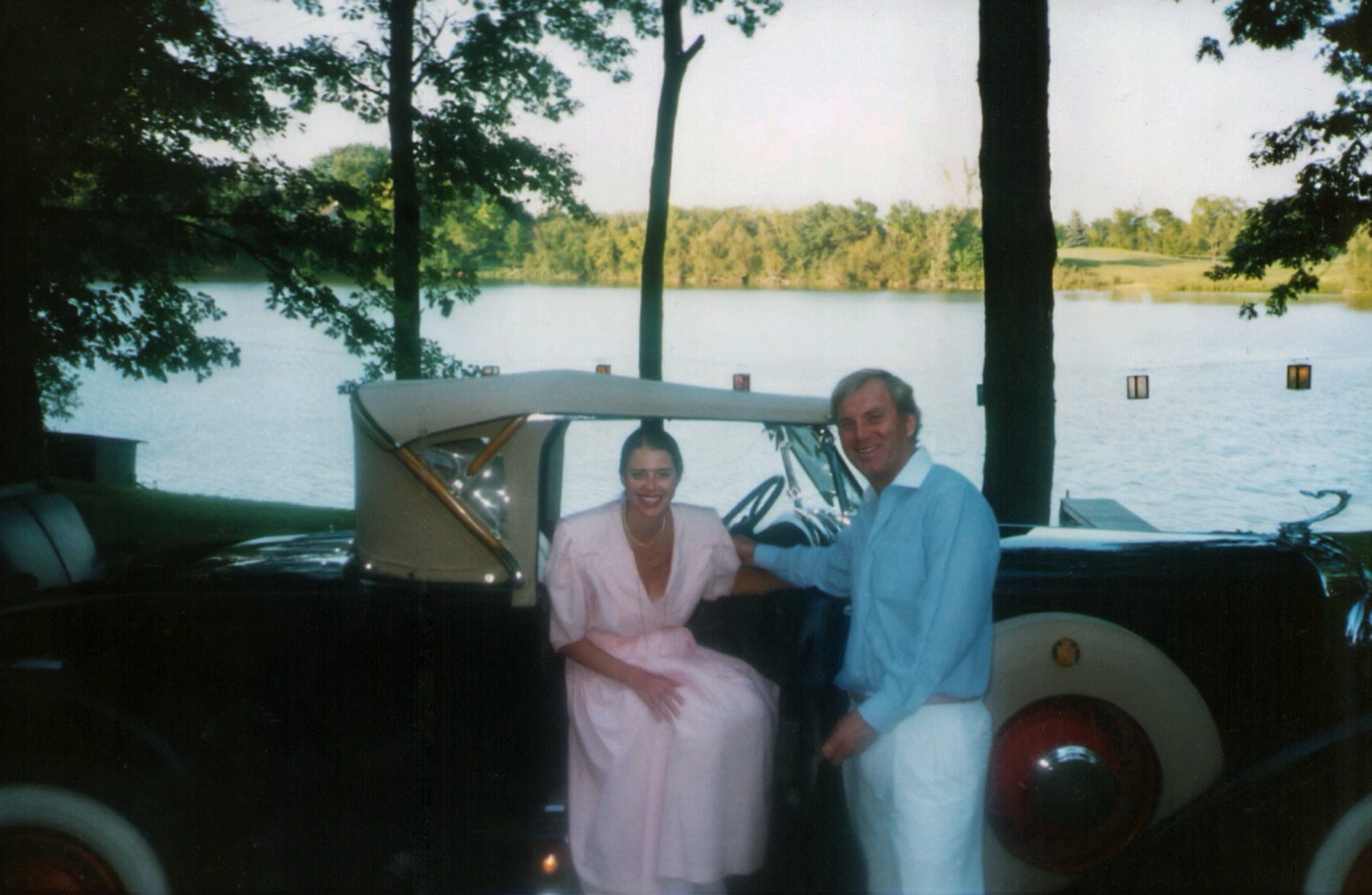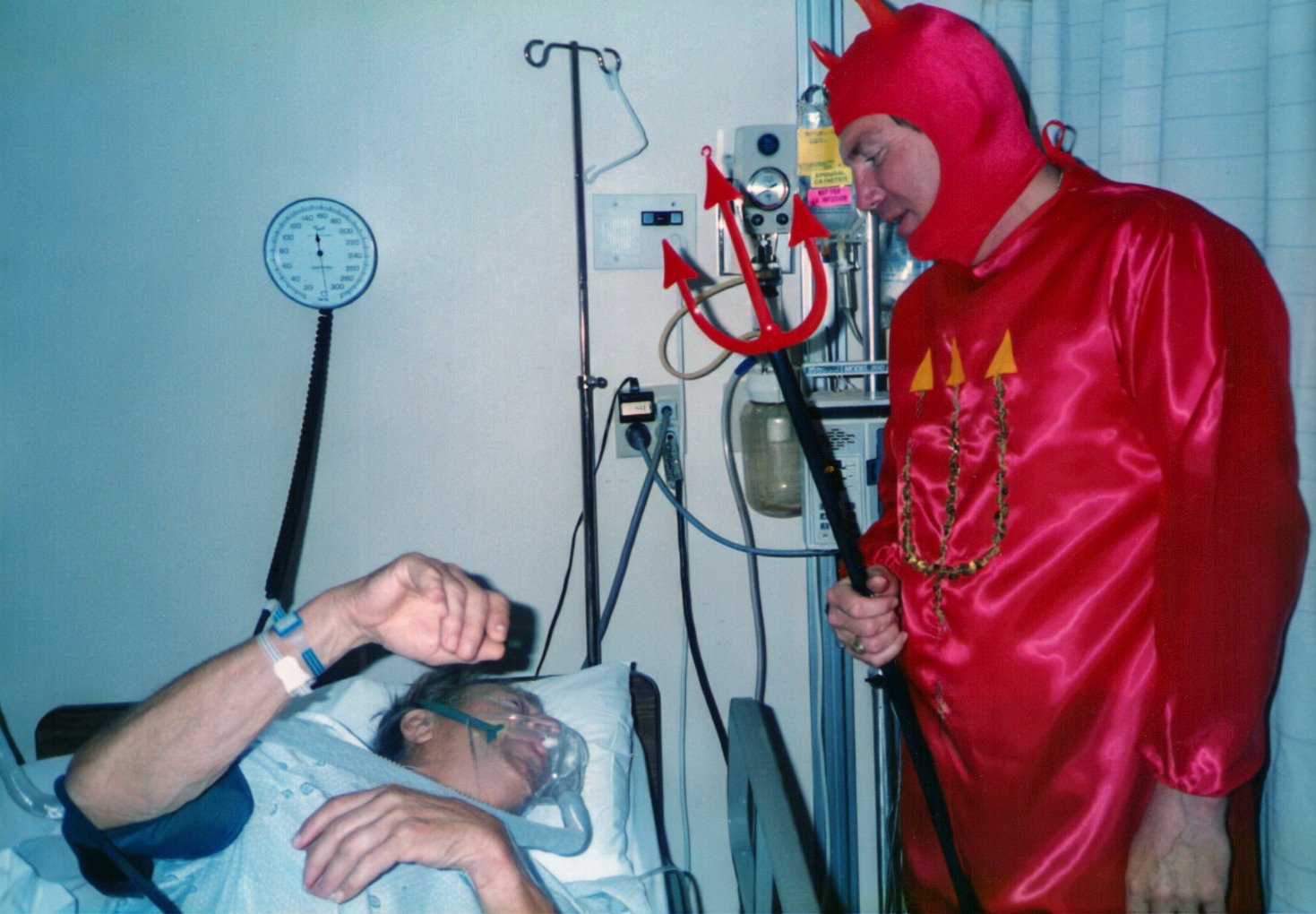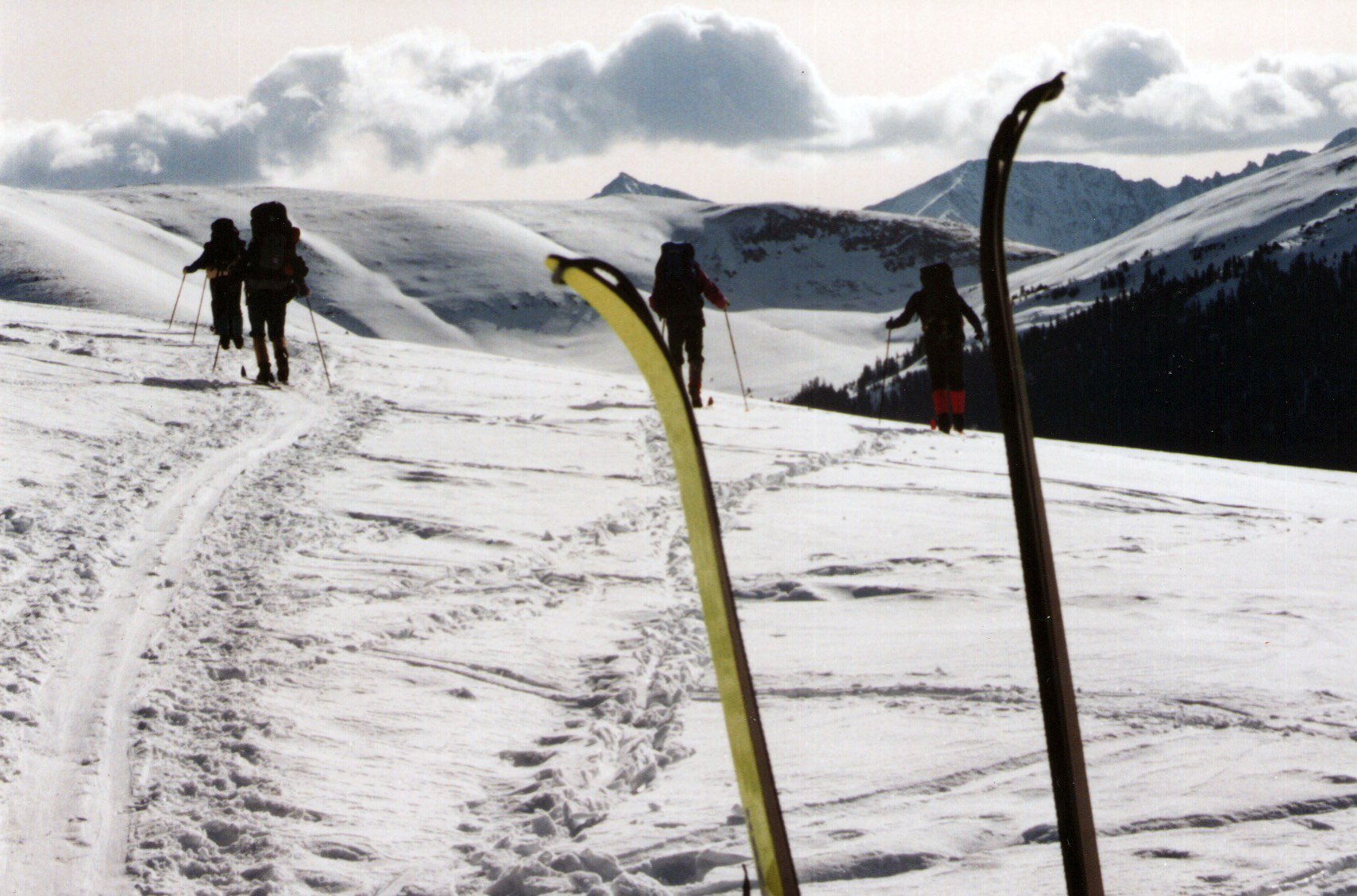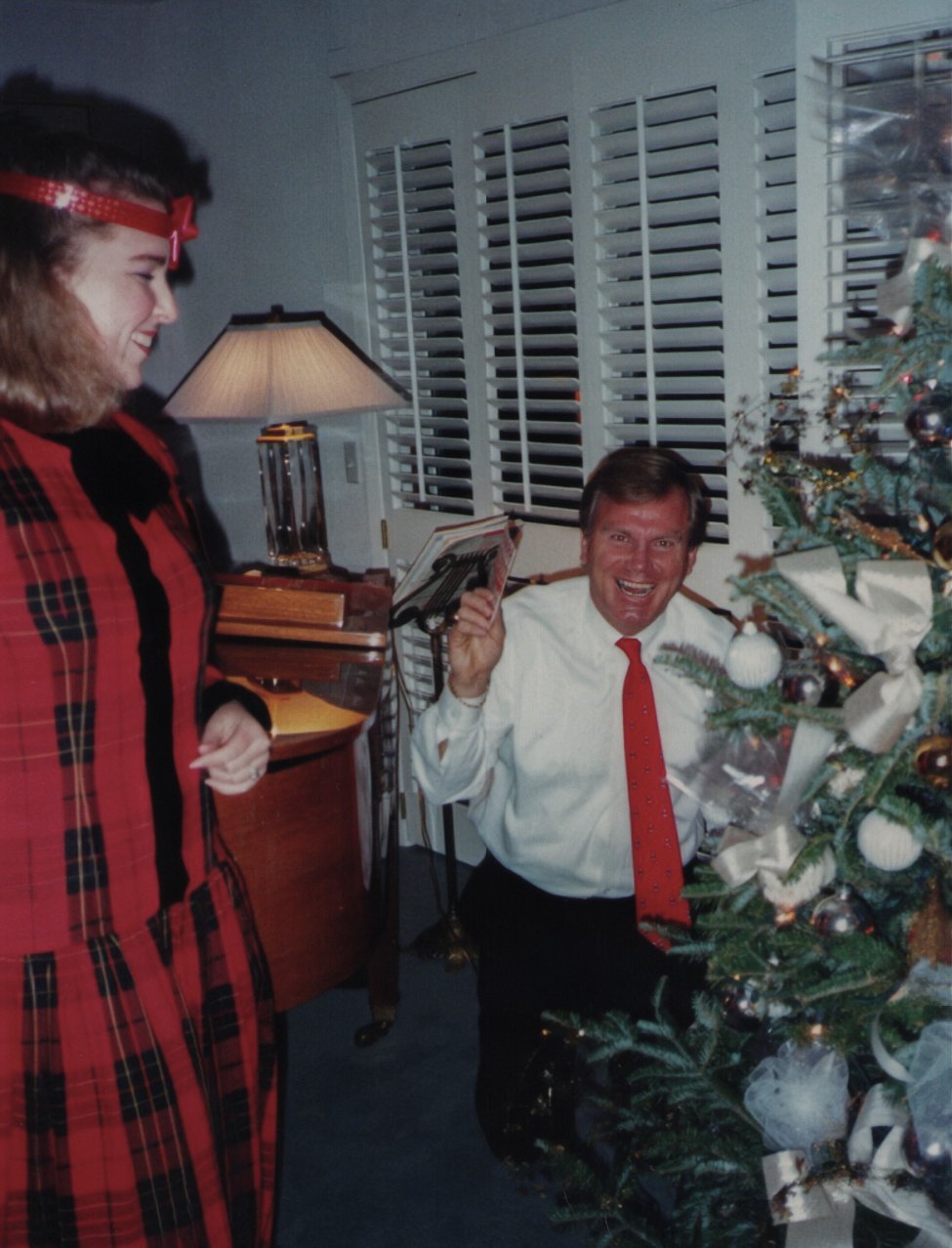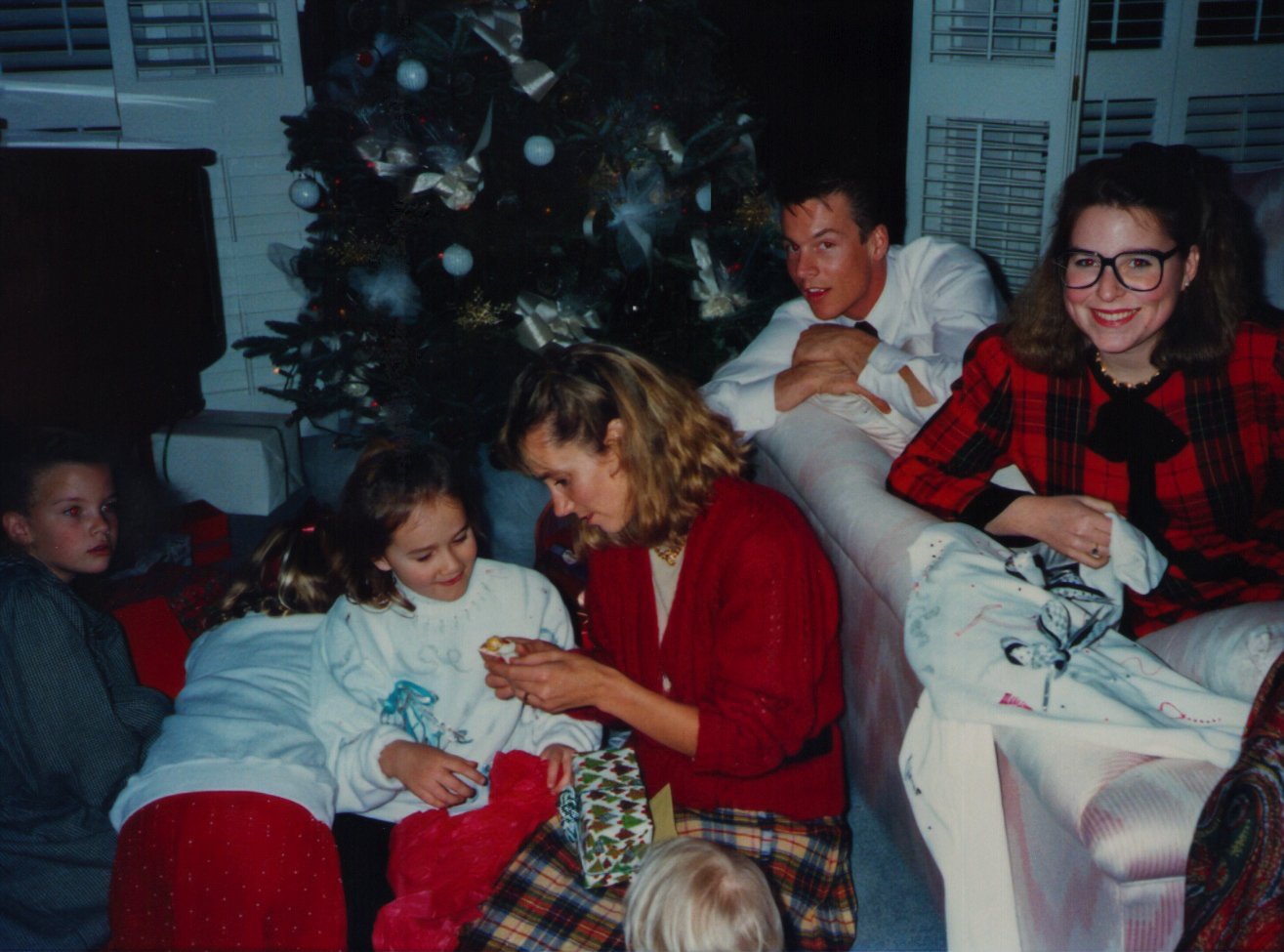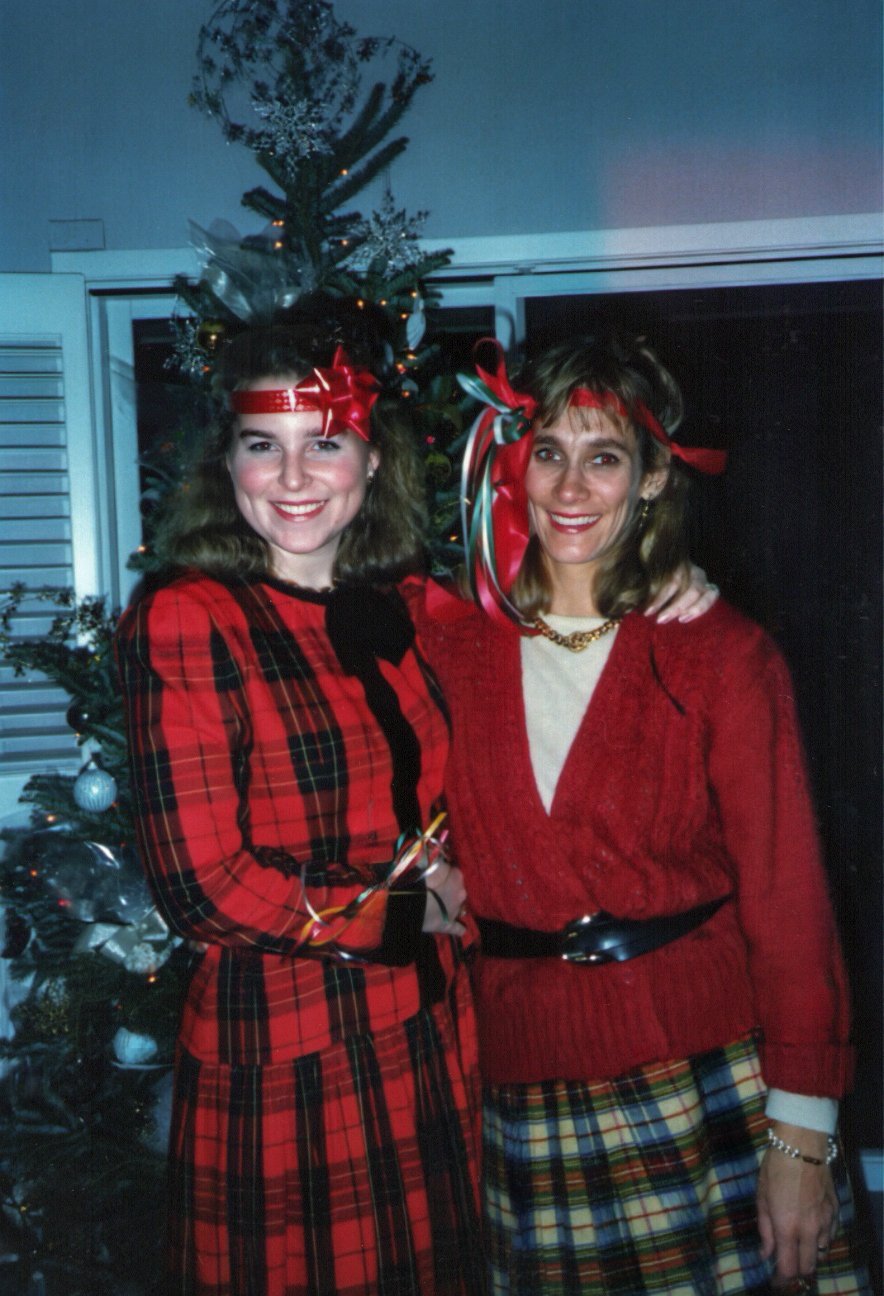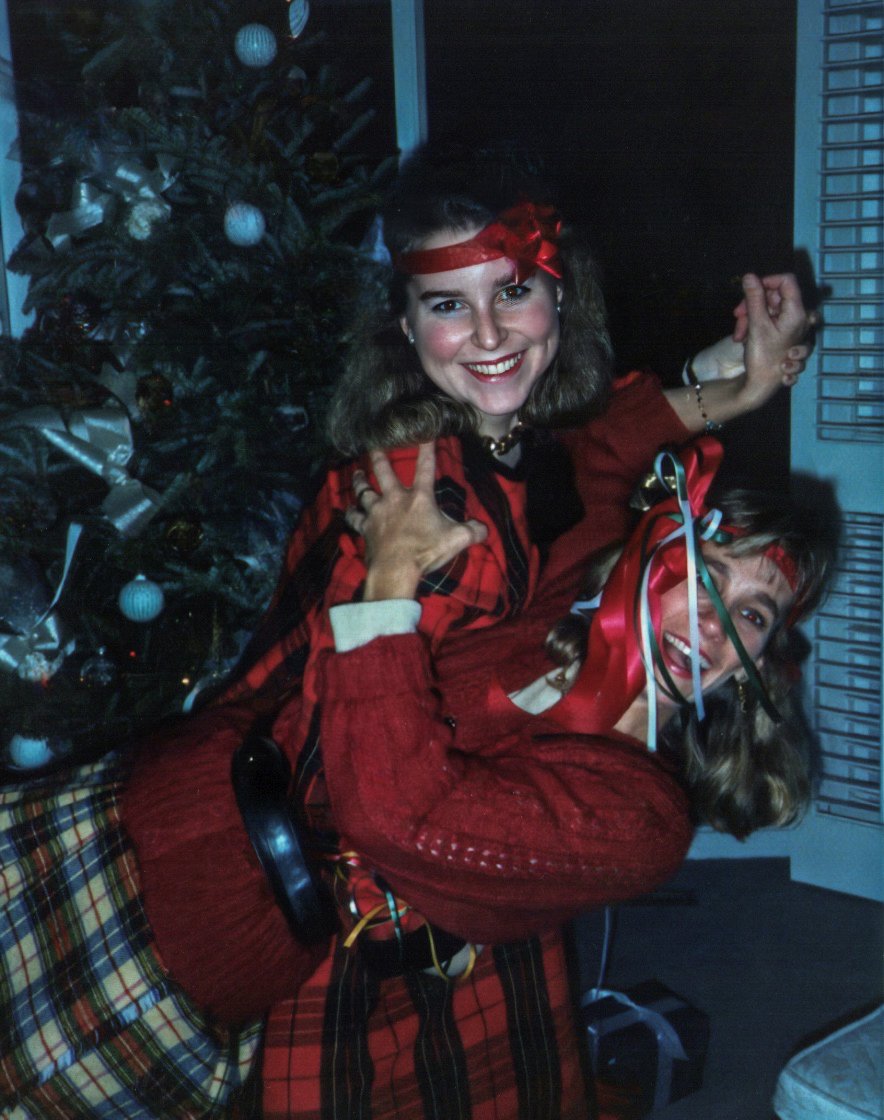Bio
by Jack Hoeschler, April 2022
A. Childhood (1942—1956).
A Tough Birth.
I was born on February 4, 1942, at St. Ann’s maternity hospital in La Crosse, Wisconsin. As it was, mine was a breach delivery and they had to assist in the extraction of the baby by pulling on my head with a forceps--a procedure that reputedly caused the partial collapse of the side of my face and the temporary paralysis of one eye in an open position.
There was also great concern that my mother would be lost, and she remembers that while they were frantically working on her, they just put me on a cold, stainless steel cart and pushed me out of the way. Apparently, I was not released from the hospital for some weeks after my mother. My mother at various times indicated that (i) she was too young and not ready to have a baby; (ii) she was so worn out by the delivery that she had little thought for me; and (iii) she was home for at least three weeks before I was released from the hospital, and she later admitted to my wife Linda that she did not care if she ever saw me again. So much for a warm, bonding experience between mother and child!
Equally Tough Pre-School.
We lived at 303 North 23rd St. in La Crosse. During my first few years my mother was a substitute teacher at Central High School. When she would get a call to teach, she would apparently leave me in the baby carriage in the back yard with a bottle and a cup of Cheerios for at least half and possibly a full day. The neighbors would sometimes have to call Grandma Hoeschler to come and take care of the crying baby. Mother seemed to recognize that this type of conduct could get someone into trouble these days, but she seemed to regard it as not out of the ordinary for the days during the war. She did however confirm that what I had heard from others was basically true.
I once accompanied my parents on a trip to Arizona and points west. (I could go because, unlike my brother Jim, I was not constantly asking if we were there yet.) We were often accompanied by my mother’s parents who would ride with me in the back seat. On this trip, however, I was alone in the back. That is pertinent because when we were crossing a New Mexico desert stretch, we ran into a washed out bridge that presented a significant obstacle. This forced us to return to the single filling station that we had passed about 20 miles back in an effort to get local knowledge as to a possible detour. This filling station was in the middle of nowhere but my father got out to go inside the garage to speak with some men who were assembled there. In the meantime, I got out of the back seat to go to the bathroom and to fill up my squirt gun. When I returned, the car and the men in the garage were all gone, leaving only a young guy to attend the station. I asked him where everyone went and he reported that they had enlisted another local to lead them upstream about 50 miles to a fordable section of the river. Apparently, my father had rushed out and driven off with the group not to be left behind. I therefore sat down on the pump island to await their discovery of my absence and return to pick me up. No panic. That eventually happened, but not until they had gone almost to the ford when someone thought to look in the back seat since I was unusually silent. I remember that my father was mad at me when they returned because of all the time lost. I later would feel a little like Jesus lost on the way to the Temple. Such was my early religious training.
When I was 5, having returned from that or another trip out west, I accompanied my mother to a grocery store to reprovision the house. At 12th and East End Avenue, she parked across the street from the store. Apparently, some kids were playing ice hockey on a rink adjacent, and she let me watch the boys while she went across the street to shop. According to a newspaper article at the time, some boys apparently frightened or chased me across the street (I surmise I may have just walked across the street between two parked cars) and I was hit by a car and dragged 60-100 feet, breaking my leg in two places. As my mother told it, someone came into the store inquiring or saying something about a little boy having been hurt and she responded that I was across the street, only slowly realizing that it was I who had been hurt. I was in the hospital for more than six weeks with my leg hanging in traction--so long that my skin peeled off when they removed the cast.
Grade School.
Apparently, my parents did not get up early enough to stand in line to get me into Campus School for first grade (this was a sought-after position and parents were known to start lining up at 3 am to ensure admission for their child). Therefore, I went to Emerson School on Campbell Road, four blocks from our house. After the third grade we moved to Ebner’s Coulee, and I then transferred to Blessed Sacrament School at Losey and King Streets. My take away from all of this was that I had to look out for myself.
B. Coulee Life.
Gunderson Ski School(s).
The move to the Coulee renewed our friendship with the Gunderson clan, especially Tore and Finn Gunderson (Toa and Ruth, their parents, had lived directly across 23rd Street from us in town). Once in the Coulee, they taught us how to ski. They had a small rope tow at Gunnar Gunderson’s in the Coulee in the early years. We then graduated to the La Crosse Snow Bowl on Highway 33 where frozen cow pies were a real hazard during the poor snow years of the early 50’s. Things improved when Ted Motchman came to town and opened Mount La Crosse. We had delightful joint family skiing trips to Telemark in Cable, Wisconsin, and Aspen. The times with the Gundersons were wonderful experiences.
The highlight of our early skiing years was going to Aspen in 1953. Toa Gunderson had been stationed near there during the war with the 10th Mountain Division and he led the way. We took the wonderful California Zephyr and, even though we went coach, brother Jim and I were able to stretch out by sleeping in the overhead luggage racks until being temporarily evicted by a new crew (we would shortly scramble back up after the inspection passed). In 1953, Aspen had mud streets, many blocks downtown that were completely vacant since the bust after the last silver boom, single chair lifts and many open silver mine shafts on the mountain if you strayed off the runs. The ski boom was yet to come.
Jim (known in the family as “Jungle Jim”; I was “Super Pooper”) and I would ski nonstop from 8 until 4:30 with our lunch consumed on a ride up the main lift. We regarded Toa to be a real pro until one day we caught him doing kick turns at the edges of Silver Queen, the very steep expert run. It is quite instructive to look at the old 16 mm movies that my mother took and to see how rudimentary was the style of skiing of everyone on the mountain in those days.
Wild Life at Home.
At our house in Ebner’s Coulee, we had 13 acres of land, three horses in the barn, a chicken coop with show pigeons, a lamb, and several goats. One year the goats got loose and went down the Coulee road to Blessed Sacrament School where they were found in the hallways by the janitor who had been airing out the school by leaving the doors open before the children came. It all made a big stir and got a picture in the paper.
My mother would hire farm girls to work as live-in maids. They were not the brightest bulbs on the tree since she only paid $15/week plus room and board. Jim and I would have great fun when we came home in the evening from some event if we knew that only the maid was home. We would sneak into the basement through the old outside cellar door, pull the main power switch and then make noises in the ductwork. Since these girls were not too smart and very impressionable, they provided a fertile field for 11- and 13-year-old boys. It was our own version of Home Alone.
For their part, neither Jim nor our youngest brother Jay liked to be left alone in the house either. They never seemed to have become as accustomed as I to that treatment. Jim would barricade himself in our bedroom by propping a broom between the two opposing access doors. Jay still mentions from time to time that he did not like to be left alone so much.
C. High School (1956--1960).
High school years at Aquinas were relatively normal. Debate was a big thing for me and doubly enjoyable because it usually involved joint bus trips with the Central debaters and all of us became quite good friends. I played football for four years but did not letter until my senior year because I played center behind a very tough and capable guy one year older than I. Interestingly enough, Coach Machuta recognized Jim’s innate ability immediately and took him out of the freshman team (almost unheard of) to play defensive safety on Varsity where he lettered his freshman year (unprecedented) and later went on to be an all-state halfback for two years-almost as rare.
I also played trombone in the orchestra and had the lead in the senior class play-a dreadful religious potboiler that the nuns selected to inaugurate the new auditorium. Summers were spent as a waterfront counselor at Boy Scout Camp Decorah, mowing grass and doing maintenance work at various Hoeschler subdivisions (including the Mormon Coulee Memorial Cemetery where I pruned petunias and hand-dug baby graves), sailing our M-20 on Lake Onalaska (with Dad sailing his own boat to add comic relief). With help from my biology teacher Sr. Paula Marie Ripple (but little help that I can remember from my parents), I got into Georgetown-initially with the idea of getting a closer look at the Jesuits and the possibility of a career in the Foreign Service.
D. Washington, DC and New York City (1960—1967).
Washington was a wonderful place to go to school-especially with the Kennedy election the fall of my freshman year. In those pre-security days, my roommate Drew Valentine played jacks on the stoop of the Kennedy townhouse in Georgetown with Caroline Kennedy one day on his way back to GU from Wisconsin Avenue. For my part, I often went down to the Library of Congress to work on various papers.
Two Georgetown Stories: Freshman Year and Crew
Kennedy Inauguration.
I have fond memories of the inauguration and the chaos caused by a huge snowfall the night before. Washington had no idea how to handle or equipment to deal with the snow. For example, they waited for the snow to stop before trying to deal with it (a real problem with the big dump that they eventually received) and they used army trucks to tow parked cars off Pennsylvania Avenue and other parade streets but failed to keep any record of where they put them. People were looking for their cars for months afterward. The chaos caused by the snowfall is not at all conveyed by the pictures of the inauguration and Robert Frost reading his famous poem with frozen breath.) I was able to get quite close to both the inauguration itself and into the Presidential reviewing stand (standing in the rear) even though I had no ticket to anything. The Washington police seemed reluctant to challenge me for fear that I might be some VIP’s son.
Sports.
I played club football for 4 years at GU and joined the crew in my sophomore year when, due to lack of snow, I couldn’t go to Pennsylvania to go skiing over a mid-January break. I made the first boat after only a few weeks on the water. We went on to win the small college championship at the Dad Vail Regatta in Philadelphia for an undefeated season. Don Cadle was our unpaid but charismatic coach, and he became a lifelong mentor for me. My crew buddies became life-long friends and we continue to this day with a Boundary Waters rendezvous each September.
I signed up for the Classics track in my course work and found myself with some of the best students in the school. That led to my being admitted to the Honors Program for the rest of my time at GU. I was a history major and received the Duffy Scholar-Athlete Award my senior year. (I didn’t think too much of it at the time but when I go back for alumni events people make a big thing of it.) I worked at NASA for two summers (through the help of Don Cadle) while the crew prepared to try out (unsuccessfully) for the 1964 Olympics.
Life with Linda.
Linda Marie Lovas and I met at the start of my junior year when she was a new freshman at Trinity College (in NE Washington near Catholic University). We met at a tea dance at the old Willard Hotel. Our first year involved only a few dates (I was busy with crew and, besides, I thought that she talked too much at a professional tennis match which we attended). We started dating seriously after a Christmas dance during my senior year. By that time, she had applied to transfer to and been accepted at Barnard (on the advice of Jeanne Kirkpatrick, her advisor). I had applied to both Columbia and NYU law schools. When I received word that I had won a full-ride Root-Tilden Scholarship to NYU, I allowed my Columbia acceptance to lapse. In the fall of 1964, Linda and I both showed up in New York City--albeit at opposite ends of a very long subway ride.
NYU was exciting and wonderfully located in Greenwich Village and the old Tammany Hall area of NYC. The veneer of hippies did not obliterate the old Italian underpinning of the area. My first weekend at law school was spent with David Ranheim (another Root from the Midwest and thereafter a lifelong friend) at the Feast of San Gennaro in Little Italy--the Godfather movie barely does it justice. It was not uncommon for us to have dinner at some nice Italian restaurant only to read sometime later that some mobster had been rubbed out at a table near where we had eaten.
Linda graduated from Barnard in 1966, and after my summer of clerking for Faegre and Benson in Minneapolis, we were married on August 27, 1966, in Pocantico Hills, just north of her home in Tarrytown, NY. We had a delightful wedding reception at the Sleepy Hollow CC. Linda planned and directed it all--a preview of her prowess as a party-giver. After a fun honeymoon on the Maine coast, we had a terrific year living on Washington Square West while I finished law school and Linda got a master’s degree in political science from the nearby New School.
E. Chicago (1967--1968).
VISTA.
After this wonderful first year of marriage in NYC, we signed up to serve as VISTA (domestic peace corps) volunteers in Chicago in 1967-68. Linda ran an outpost for the famous Jane Addams Settlement House, and I worked for Community Legal Counsel, an ABA sponsored demonstration project that sought to put volunteer lawyers at the command of community groups. We lived on the north side near the infamous Cabrini Green public housing project and across the street from the now demolished but equally infamous (at least in film) Cooley High School.
The rule in VISTA was that we had to live in the poor neighborhoods, but the secret was that we lived in a huge 2-bedroom and 2-bathroom apartment over a shuttered bakery at Division and Sedgwick owned by Manny and Evelyn Elson, a delightful couple who lived on the third floor. They had bought the building in the 30’s thinking that the neighborhood would improve--it never did until long after they were gone. But their building was an oasis of charm, art, poetry and quiet in an otherwise desolate area. After Evelyn died in Linda’s arms two weeks before Kristen was born in the fall of 1968, Manny became Kristen’s (and later Fritz’s) surrogate grandfather--a role my parents, at least, were not yet ready to assume.
MLK Assassination Riots.
1968 was an exciting year to be in Chicago, what with the Tet Offensive in Vietnam, the release of the Kerner Report in early March (denouncing widespread white racism and police brutality as a cause for the 1967 “summer of rage”), a week of riots after the murder of Martin Luther King in April, and the police riot at the Democratic National Convention in August. The north side part of the King riots started outside Cooley High and our front door. We had to evacuate the apartment for five days and stay in the Gold Coast apartment of George Moehlenhof, a law school friend. For his part, George was called up in the National Guard to help quell the burning and looting.
When the rioting broke out, we were taking Linda’s mother to Midway Airport after a visit. As we returned along the Stevenson Expressway through the southwest side, we could see numerous fires and knew that trouble was brewing. We decided to go to the CDC downtown offices rather than to our usual south side areas of work. There we were met and followed by a stream of CDC lawyers who had fled (some injured) their neighborhood offices to the safety of the main office downtown. Later that afternoon, after talking with Manny and Evelyn by phone to learn that they were planning to move in with his brother in Hyde Park, we drove toward our apartment to retrieve a suitcase of clothes so that we could move into George’s apartment.
As we headed west on Division from the lake, we were allowed through police barricades at Wells only to see in the distance what looked like naked bodies lying in the gutters with more police cars beyond. As we got closer, we realized that these were stripped mannequins that had been in the windows of looted stores. After we got our clothes and selves safely out of that battle zone, we would go each evening to the bar on the top of the Executive House on North Wacker on the edge of downtown, to get a view of the north side to see whether the fires had reached our building. Luckily, they did not, and we were finally able to return after 5 days. It was like living on one side of the Green Line in Beirut during the civil war there.
Other Hazards of the “Hood”.
That summer Linda, pregnant with Kristen, went back to NYC to finish some credits she needed for her degree from the New School. Just before the Fourth of July, I was helping Clotee McInnis, a friend of our office, move out of Cabrini Green to a better apartment. In the course of that work, I was jumped by 8 punks armed with straight razors who wanted to beat the hell out of the “honkey”. I was eventually saved by the bravery (and guns) of a Puerto Rican woman who beckoned me into her ground floor apartment during a lull in the fight. The police took me to the hospital but knew less about that big housing project than I did.
It is interesting to note as an aside that all Chicago police were put into cars following the scandals of the late 50’s when they were disclosed to be shaking down merchants on their beats for special protection. As a result, they could get quickly to the scene of a crime but were seldom able to prevent or stumble onto crime. At the same time, architects and planners were pushing to break up what they regarded as the “monotonous” grid of the city streets by creating big 2x3 block super parcels on which the high rise (19 story) public housing quadrangles like Cabrini Green and Robert Taylor Homes were built.
The consequence of the overlap of these two liberal/reform ideas (all police cars linked by an advanced radio network and super blocks without intervening streets for big public housing projects) meant that these big projects were lawless compounds run by youth gangs that the police were literally afraid to enter. Thus, after they picked me up, they drove me around the area on the way to the hospital hoping that I might see some of my assailants. To the police, all of the black residents were analogous to the “gooks” that the US soldiers were trying to protect and distinguish from the Viet Cong in Viet Nam. The intelligence network of the police was as poor as that of the US Army.
I was unable to spot anyone, and I was taken to the hospital to have the cuts to my face stitched. Luckily, these cuts were from rings, as I believe that I had been able to talk them out of using the straight razors on me. I also had a hemorrhage in my right eye that made me look very abused. This all gave a fright to the rest of the lawyers in the program, most of whom were smaller than I.
Democratic Convention.
The last exciting event of the year was the Democratic National Convention in August of 1968. It came complete with tear gas, helicopters, thousands of demonstrators near our downtown office chanting “the whole world is watching”. I was one of a group of volunteer lawyers who helped people who had been arrested. One of my most interesting clients was a guy from Alabama who had climbed to the top of General Logan’s equestrian statue across from the Hilton Hotel during one of the big demonstrations. A Viet Cong flag was passed up to him as he sat on the shoulders of the statue, and he waived it lustily to the cheers of the crowd until the police encircled the statue and threatened to pull him down. As he was dismounting the statue along the rider’s left side, his right arm got caught in the hilt of the figure’s sheathed sword and when the police grabbed his legs to yank him down, he was stuck and unable to come until his arm actually broke. To offset any police brutality charge, he was charged with feloniously hitting an officer. Luckily, we were able to get the outtakes of the TV coverage of the event to show that he never hit the police. This entire experience got me a good, behind the scenes look at Cook County Jail as well as the way the police and justice system worked if you were on the other side.
F. Minnesota (1969 to Present).
After our exciting eighteen months in Chicago, we moved to the Twin Cities where I joined the state’s oldest law firm, Doherty, Rumble & Butler. When I joined, DR&B had 23 lawyers and only one person doing much real estate--they were actually thinking about farming out the real estate work. Over time, my Minnesota practice (I was also admitted in Wisconsin and did a variety of work there) gravitated more and more to real estate. I stayed with DR&B for 13 years (while it grew to 75 lawyers) and helped build and lead a major real estate practice that played a significant role in most new building projects in St. Paul during the 70’s and 80’s.
Parallel to my professional work, Linda and I early joined The Bach Society Chorus. We sang with the Chorus for about 6 years where we met and made some of our best, life-long friends. We also hosted numerous artists and scientists during this time at monthly dinners at home.
My most significant effort during the 70’s was as, initially, the technical lawyer for The Science Museum of Minnesota. Over time, I ended up as the “clerk of the works'' and Project Coordinator for the expansion of the museum and Omnitheater. When Phil Taylor, the museum’s executive director told the board that he would like them to find a paid president to take his place as CEO, I became the de facto head decision-maker at the museum until Wendell Mordy was hired as President. It was fun to have my parents present at the opening night dinner when Wendell described the new building as “the house that Jack built”.
During my SMM service, I “represented” the museum’s Triceratops dinosaur when it was getting shaken to pieces by the blasting for the new underground city parking ramp being built across the street beneath the air rights parcel on which we were to build the Omnitheater and museum expansion.
I spoke with paleontologists all over the country until I found the singular Jim Jensen from BYU, a real Eric Hoffer polymath. He had never graduated from high school but was the nation’s foremost big boned dinosaur expert and excavator. He had learned his paleontology on digs in Utah. He was a proud member of the iron workers union as well as the recipient of several honorary doctorates. He helped us come up with a quick, practical, and relatively inexpensive solution to our problem. This was the alternative to a technically complex, costly and time-consuming solution which the contractor’s insurance company was willing to fund. I convinced the insurance company to give the museum the money it had been willing to spend in return for our taking the risk that Jensen’s scheme would not work. It did work, and the paleontology department was funded for several years with the proceeds.
Other Projects.
In the early 80’s, Dave Jasper, another Science Museum figure and I bought and operated an Omnitheater adjacent to the Seattle Aquarium. We worked on Imax film projects and consulted with other museums like the Denver Science Museum. I eventually gave my interest in Seattle to Dave because the travel requirements were taking too much time from my bill-paying legal work.
That work included a leading role in the financing and completion of the renovation of Landmark Center (the Old Federal Courts Building on Rice Park), the historic restoration of the Pioneer Building, the St. Paul Hotel restoration, the Ordway Music Theater, the bond financing of the monorail at the Minnesota Zoo, and the first coop housing development in the city. In most of those projects my role was much more than that of legal scrivener. I often acted as a major driver or coordinator for the projects. I worked closely with the likes of Dick Magnuson, Betty Musser, Sally Irvine, Ed Titcomb, Joe Micallef, David Lilly, Frank Marzitelli, and George Latimer on various aspects of these projects. I was instrumental in bringing Ben Thompson back to St. Paul to design the Ordway Music Theater.
During this time, DR&B saw Linda and me as comers and nominated us to several important boards. I served on the boards of Minnesota Dance Theater and School, the Minneapolis Art Institute, the Minnesota Chapter of The Nature Conservancy, The Citizen’s League, The Science Museum of Minnesota, and the Saint Paul Chamber Orchestra.
Solo Practice (1982 to 2022).
I left DR&B in 1982 and opened my own practice to give myself more freedom to do projects of my own, such as the Seattle Omnidome, that went beyond straight legal work. My first new client as a solo was Minnesota Public Radio in connection with the CATV franchise fight in St. Paul. From that I came to represent their partner Continental Cablevision, the eventual winner and served them for 10 years until Comcast bought them out.
Also, during this time, I joined with Bob Gossett (a NYC friend) to purchase the First National Bank Building block in St. Paul. The joke was that I had done this $46 million deal just to get a free parking place--I was famous for knowing where all the free parking was in St. Paul. We looked like geniuses when we refinanced after a year and a half at a much better rate. I took that opportunity to sell my half interest to Bob. Linda and I then took the kids out of school to go around the world for six months.
180 Days Around the World.
Our around the world trip was the high point of a lot of exotic travel that we had already done with the kids (and sometimes Manny Elson) to places like Egypt, Peru, the Galapagos Islands, China, and Russia. Linda had been working most recently as a Group Vice President for National Computer Systems after having been a regional manager for B. Dalton Bookseller, a corporate Vice President for Dayton Hudson Corporation, and the director in charge of the arts giving for the Dayton Hudson Foundation. The money from the sale of the bank building, the fact that she had just recovered from a serious stay in the hospital, combined with the fact that we had been looking for a way to “red shirt” Fritz for a year, all made 1985-6 a perfect time to take off and see the world. Kristen was going to be a senior in high school, and we decided that she could blow away her spring semester without any great loss (though she was not so sure of this). Linda, Fritz, and I, along with Manny, took off for Japan in October with the idea that Manny would return after a month in Japan and Kristen would join us in Thailand after she finished her fall semester and completed her college applications. During that time, she stayed with Bob Ebel and Leslie Steen our wonderful next-door neighbors.
Before we left, we agreed that we were likely to be either closer as a family or at each other’s throats during such a trip. Therefore, we agreed that if it did not work out, we would simply come home early. As it was, everything went very well. We were able to send Manny back with all the extra clothes we realized we did not need, and we proceeded on with one suitcase apiece to a month in Thailand after a month in Japan. We met Kristen in the Bangkok airport on Christmas Eve and headed on to a month in India and Nepal, followed by a month in Egypt, a couple weeks in Greece and two months in Italy based out of an apartment in Florence. It was the best time of our lives and the family really bonded during the experience. We would recommend such a trip to anyone with teenagers. All of our trips since, without the children, have been the less for it.
Gem Lake.
Just before we left on the big trip, we were able to purchase the Frank and Eunice Butler property at Gem Lake, Minnesota. This rare property, featuring a log cabin and an Edwin Lundie addition on l8 acres close to town, allowed us to move to the cabin in the summer like the rest of the true Minnesotans, albeit with only a 11-mile drive, and to go south in the winter, even if it is only as far as Highland Park. As a sometime resident of Gem Lake, I served as the head of the Planning Commission, a successor volunteer job to my role as the Chairman of the Saint Paul Riverfront Development Corporation, a position I had held for about 6 years. During that time we reoriented St. Paul back to the river as its front door rather than as a polluted alley. This was perhaps my most important public service position. In the meantime, I continued to serve on the Guthrie Theater board and to be a member of the Minnesota Humanities Commission.
Minnesota Commissioning Club (1990 to 2020).
In 1981, Linda and I started a practice of commemorating our anniversaries every five years by commissioning Steve Paulus to compose a serious chamber piece to mark the occasion and to provide the opportunity for a party around the premiere somewhere out of town. That proved so popular that others asked how they might do the same. When they still seemed reluctant to take the plunge, I decided that we should establish a commissioning club along the lines of an investment club. Notwithstanding its uninspired name, the Minnesota Commissioning Club sponsored a good number of important and popular works and became a model for others around the country. The club provided another mechanism to develop closer relations with a group of life-long friends. This happened while I also served on the board of the World Press Institute.
G. Sweden (2005).
Besides our trip around the world, we have had many wonderful foreign vacations but none as noteworthy as our 2005 trip to Sweden to pick up a new Volvo in anticipation to driving to Berlin to join our Minnesota Commissioning Club at the premiere of one of our commissions. That is one concert that we failed to make. We flew into Goteborg, Sweden to pick up our new car the next day. Twenty miles from the factory, I passed out while driving about 60 mph, drove off the road to the right, and turned the car over after hitting a concrete sign abutment. Linda was pulled out through the windshield and taken to the hospital by ambulance. I could only be extracted after they pulled the roof off, after which I was flown by helicopter to the same hospital in Kungalv.
The surmise is that I suffered a minor stroke from a deep vein thrombosis that got through a hole in my heart into my brain. In any event, I lost 2/3 of my blood and my spleen the next day. Linda suffered from a broken sternum and two broken vertebrae, one an explosion break (which usually, but luckily not here, cuts your spinal cord) and a second, even more dangerous transverse break which was not discovered until a few days after the accident as she started to experience numbness in her legs. She was transported to the University Hospital in Goteborg where they inserted 10” of titanium rods along her back to stabilize it.
We were both in the hospital for 3 weeks (one week each in intensive care). The medical and hospital bills came to $36,000 which the Volvo insurance paid. Had we been in a US hospital, Linda’s US doctor says that he would have charged $250,000 for the back operation alone. The moral of the story is that, if you are feeling unwell and do not have insurance, get on a plane, go to Sweden where the care is as good or better (more nurses), and pay for it out of your own pocket.
This unfortunate start gave rise to a number of significant and enjoyable subsequent vacations in Sweden, the most memorable of which, in 2016, was a two week sailing excursion in the Stockholm Archipelago to celebrate our 50th anniversary with children and spouses (Terry O’Brien and Julia Hoodless Hoeschler) and grandchildren (Jack and William O’Brien) and our accompanying priest Frantisek Trstensky. (Never leave home without one!) Linda and I had sailed part of this route a few years before with friends from out east but this time we hired a Swedish skipper for one of the boats and had Fritz skip the other. We stepped onto our boats from the Strandvagen adjacent to our Stockholm hotel—quite a swanky way to leave and return. The trip was terrific, and we want to do another once we get out from under the Covid lockdown.
H. Life as a Late Blooming Litigator and Moss Wrangler
About 2010, John Mannillo introduced me to Bill Englund, the pastor of Lowertown’s First Baptist Church (the oldest in St. Paul). Bill’s church was getting unfairly fried by city assessments for street cleaning. Along with several other plaintiffs, I took their case twice to the Court of Appeals and ultimately to the Minnesota Supreme Court (with help from David Ranheim). In 2016, the Supreme Court ruled unanimously that the city was misbranding a $33,000,000 tax as a regulatory fee. Unfortunately, the City has not given up and our fight continues for subsequent years. The fight will need to be continued by my friend Ferd Peters who has taken over all of my legal files.
Ed Note: On May 2, 2022 Ramsey county district Judge Robert Awsumb ruled in favor of Jack and his plaintiffs. The StarTribune wrote: Hoeschler, who is being treated for an illness at a hospital, said Tuesday that the ruling “energized me enough to get out of my sick bed and dance.” Before Jack died on June 22, 2022 he learned that the City would not appeal this landmark decision.
Japanese Garden,
The last thing that I want to report is the pleasure I have gained from being the “moss wrangler” for our Japanese garden. We have planned and built the garden over 25 years. During the Covid lockdown, I finally came to the realization that I should retire as lawyer and continue as moss wrangler. This was reinforced when we discovered that I had both a run-away heart and fourth stage prostate cancer in the summer of 2021. A pacemaker and an ablation operation seems to have solved the cardiac problem but I am on chemotherapy for the cancer and will likely die of it. Such is life. But all in all, it has been a good and rewarding life.
Nevertheless, the “two-minute warning” provided by the cancer diagnosis has resulted in numerous thoughtful and heartfelt notes from many friends and associates. I have been able to respond to these and thank folks in ways that would be impossible if those thoughts were held until my memorial service. Moreover, I have set my life goal to make it until graduation from high school and college by Jack and William O’Brien, my best buddies. The “two-minute warning” also helps me focus on the important things that I would still like to do with my time.
We have been pleased with the marriages of our two children; Fritz to his wonderful wife Julia, even though she can never bring herself to leave Florida and enjoy a Minnesota winter; Kristen to Terry, especially because he provides terrific camping and hunting experiences for their two boys. Since the O’Briens live less than a mile from us in St. Paul, that makes it possible for the two boys to be over here quite often to help, play violin, or just to talk. This plays to my constant desire to mentor and counsel as was noted by many at my 80th birthday party. May all of you be blessed by such wonderful wives, children and grandchildren, along with an attendant priest from time to time.
Class of 1964
Testimonials (private)
1960 Aquinas - "In the Elks sponsored contest on knowledge of the U.S. Constitution, John Hoeschler, Bob Mahan, and Phyllis Tschumper were the school champions. Competing with area high schools, John won the first place award of $125 and Bob, third place award of $75."
1960 Aquinas - Baubles, Bangles, and Balloons lent appropriate atmosphere to the New Orleans street scene which was the theme of the Mardi Gras. 'Midst confetti and streamers Mary Anne Loefflad was crowned queen of the festival by her escort, Jack Hoeschler.
1960 Aquinas - "Gay festive floats and a peppy marching band prefaced our Homecoming dance with Mary Fredricks and Gary Poehling reigning. A leafy fall setting provided a fitting background for the royal couple and their court; Pat Pincsak and Jack Hoeschler."
1960 Aquinas.
1960 Aquinas - Jack works at father's drug store, plans to major in Philosophy at Georgetown University
1960 Aquinas - "Centered in Jerusalem at the time of Christ and the Roman occupation, Shadow of a Cross tells of Joel of Gallim [Jack Hoeschler] who hates all Romans but especially Paulus. He is prevented from killing Paulus by his friend Stephen."
1961 Georgetown University - "The spirited Soph line was led by Jack Hoeschler and Bob Meyer."
1961 Georgetown University
1962 Georgetown University
1962 Georgetown University
1962 Georgetown University
1963 Georgetown University Band. Jack Hoeschler, trombone.
1963 Georgetown University Crew
1963 Georgetown University Football Team
Georgetown University Christmas Dance, December 13, 1963. Linda Lovas attends.
1964 Georgetown University
1964 Georgetown University Crew. Jack #2
1964 Georgetown University Crew. Jack #2.
Georgetown University Junior Prom July 16, 1963 - Linda Lovas attends with Jack.
Bowe Family of Fox Lake, WI circa 1907 Mary Derivan Bowe (1861-1952) Lester Bowe (1902-1951) Edward Bowe (1896-1921) Lillian Bowe (1898-1980) William Bowe (1889-1961) Harriet Bowe (1894-1932)
Bowe Family of Fox Lake, WI circa 1907 Edward Bowe Lester Bowe Lilian Bowe William Bowe Mary Bowe Harriet Bowe
Jimmy and Jack, Aquinas High School, All State (Photo: La Crosse Tribune)
1986 celebration for Jeanne Baldy
Julia and Fritz Hoeschler, Jack and Linda, Kristen, Terry and Jack O'Brien, Thanksgiving 2003
Jack and mother, Georgetown graduation, June, 1964
July, 1982
Jack and Linda's wedding, Tarrytown: Janice, Joy, Jessiccy, Jack, Linda, mom, dad
February 1, 1993
December 29, 2007
December 13, 2004
January 30, 2008
© R.J.Capak, photo
November 26, 2016 with Larry and Patti Kenyon
September 24, 2016
July 23, 2005
March 15, 2005
December 13, 2004 with Stephen Paulus
October 15, 2012
October 15, 2012
February 16, 2001
October, 1993
October, 1993
5 days before Kristen is born
December, 1965
June, 1964
Fritz at 14
August, 1987
2008
March 1994
August 1998
August 1998
February 1995
June 1993
February 1996
Terry and Kristen's engagement party, August 2003
March 1994
July 1993
July 1993
December 1997
December 1997
September 1965







![1960 Aquinas - "Centered in Jerusalem at the time of Christ and the Roman occupation, Shadow of a Cross tells of Joel of Gallim [Jack Hoeschler] who hates all Romans but especially Paulus. He is prevented from killing Paulus by his friend Stephen."](https://images.squarespace-cdn.com/content/v1/62e163b72ac2810ad9183578/a06fe835-4e65-40ff-b1a9-697d03267fd3/1960shadowofacross.jpg)














